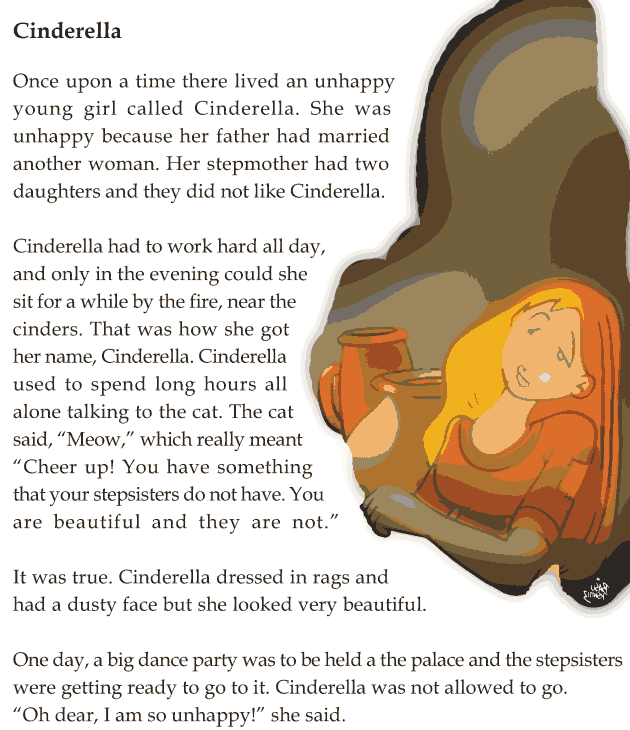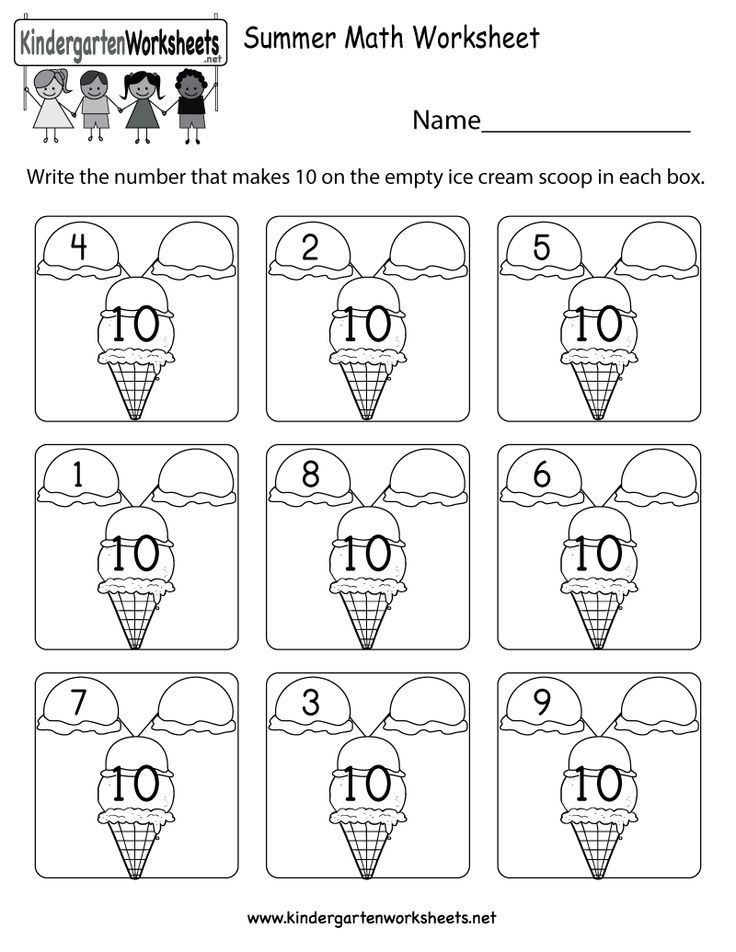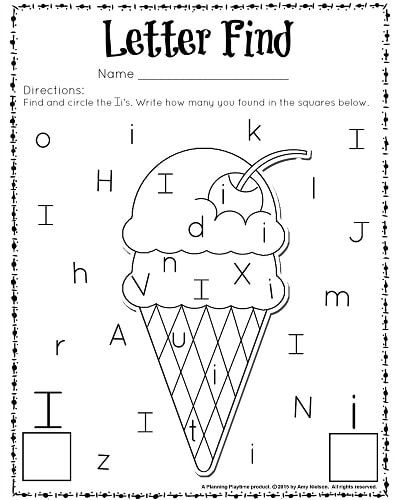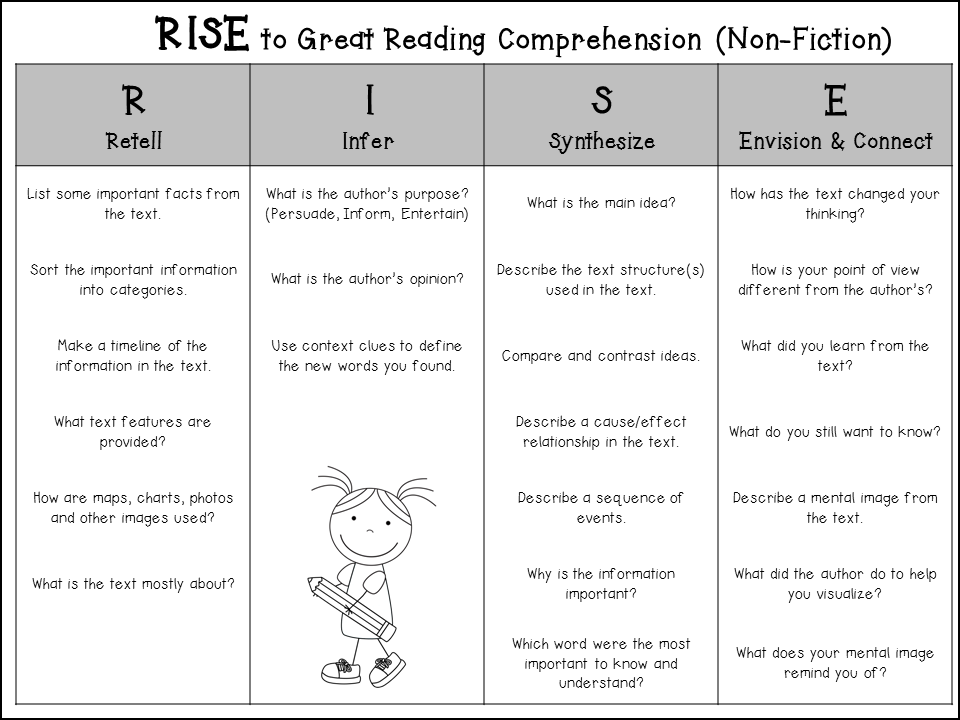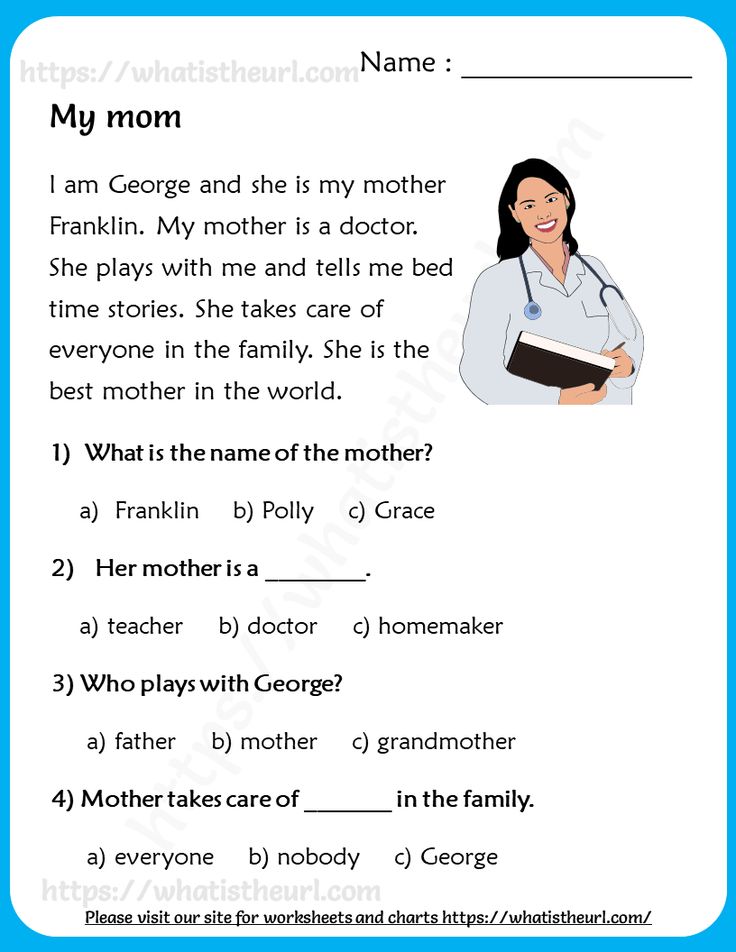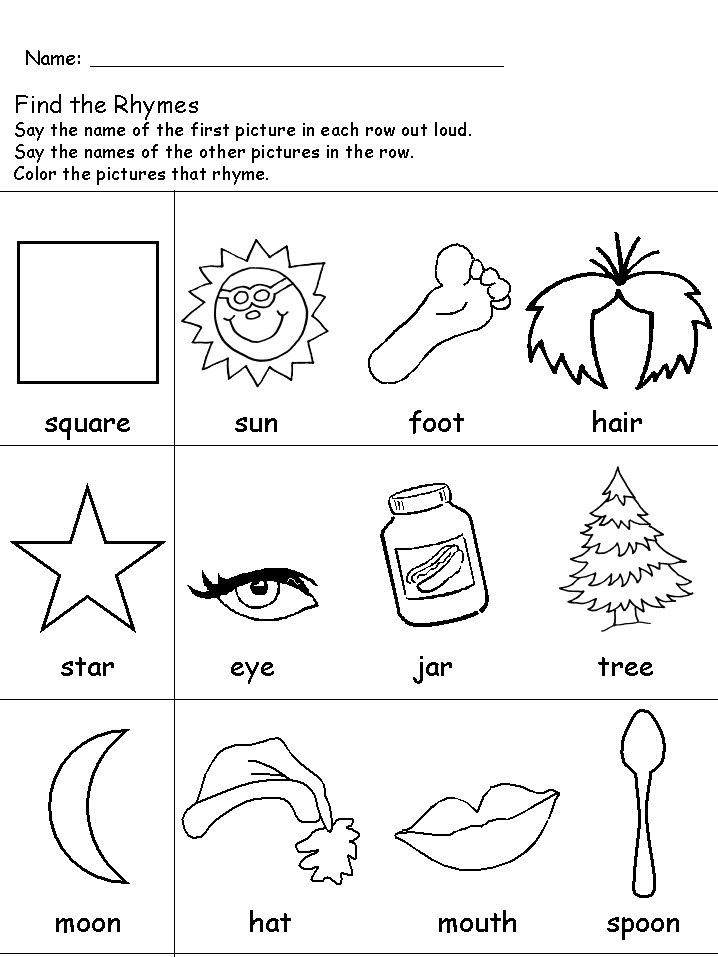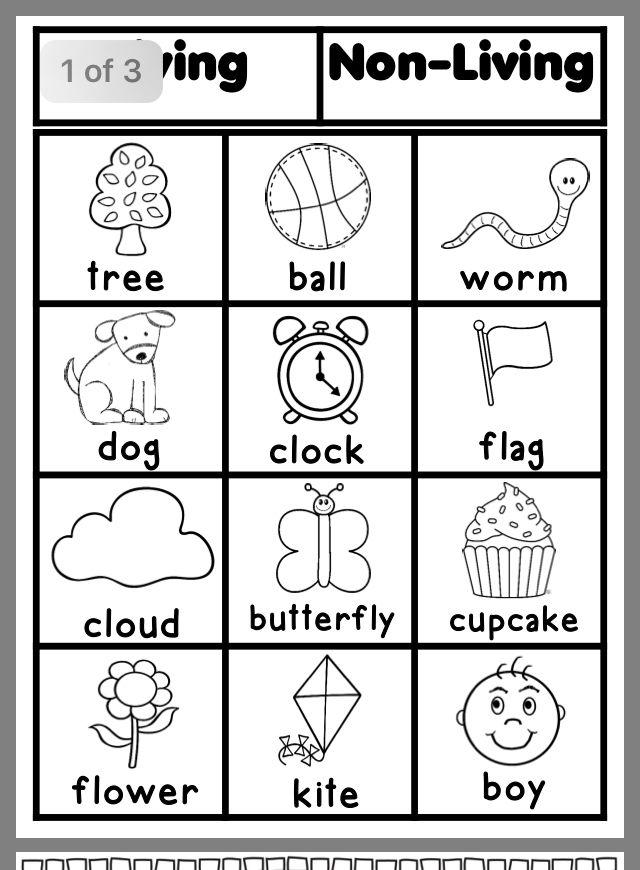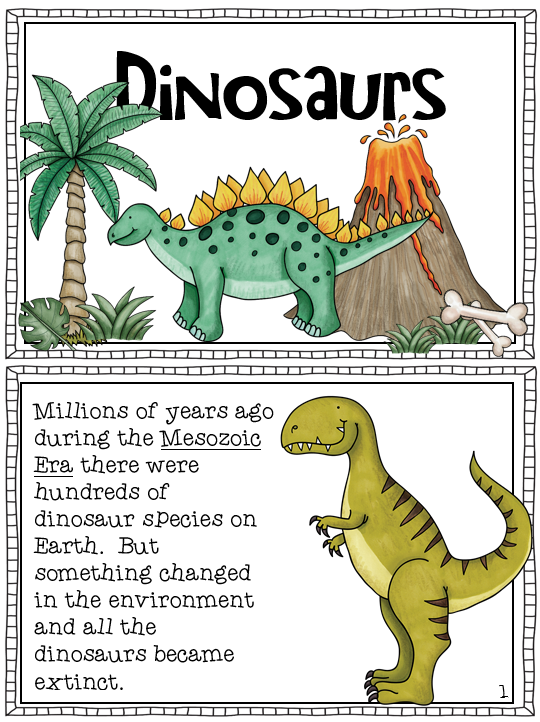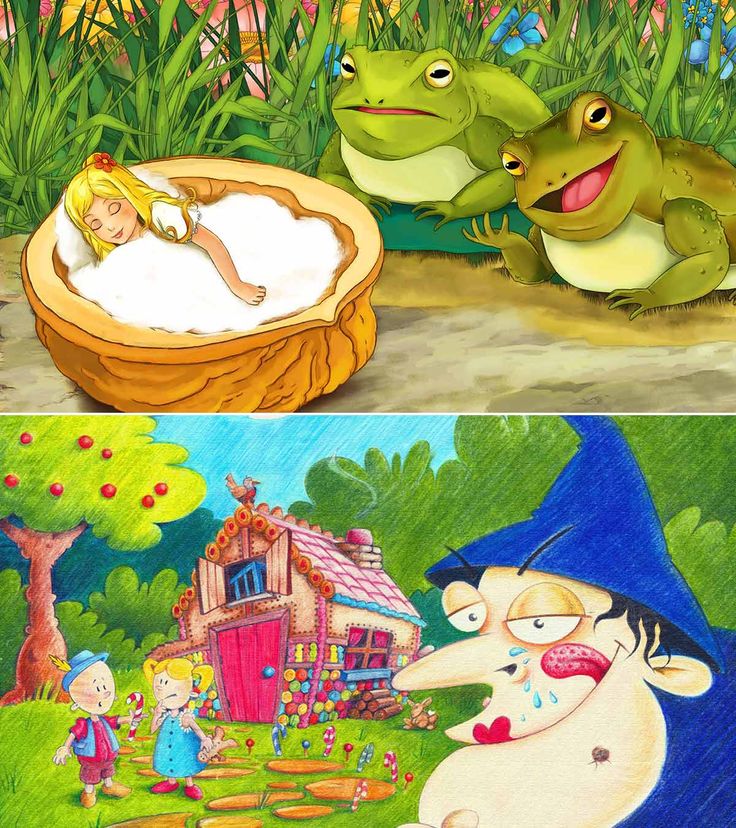What is fairy tale story
Fairy Tale: Definition and Examples
I. What is a Fairy Tale?
A fairy tale is a story, often intended for children, that features fanciful and wondrous characters such as elves, goblins, wizards, and even, but not necessarily, fairies. The term “fairy” tale seems to refer more to the fantastic and magical setting or magical influences within a story, rather than the presence of the character of a fairy within that story. Fairy tales are often traditional; many were passed down from story-teller to story-teller before being recorded in books.
II. Examples of Fairy Tale
Fairy tales, in the literary sense, are easy to find. Look at your bookshelf or your DVD collection.You may see titles likes these:
- Snow White
- Cinderella
- Rip Van Winkle
- The Twelve Dancing Princesses
- Rumpelstiltskin
- Thumbelina
They are all fairy tales. They belong to no one and have been adapted and retold countless times.
Fairy tales do not need to be written down to be legitimate. Many tales that your parents or grandparents may have told you off the top of their heads are also fairy tales. For example, stories of the tooth fairy, the boogeyman, leprechauns and pots of gold or even Santa Claus.
If a story takes place in a magical land, with fantastical creatures who perform wondrous tasks, it is very likely a fairy tale.
III. Types of Fairy Tales
There are no rules that define fairy tales. Therefore, they are categorized by their elements, types, or motifs.
Here are some of those types and examples of stories that fit those types:
- Supernatural Adversaries: Hansel and Gretel, Red Riding Hood
- Supernatural or Enchanted Relatives: Sleeping Beauty, Beauty and the Beast
- Supernatural Helpers: Cinderella, Puss In Boots
- Magic Objects: The Magic Ring, Aladdin
- Supernatural Power or Knowledge: The White Snake, Ali Baba
- Religious Tales: The Three Green Twigs, The Flower of Lily-Lo
- Realistic Tales: The Falsely Accused Wife, Ariadne
- Tales of Fate: The Robber Bridegroom, Oedipus (Aarne-Thompson)
IV.
 The Importance of using Fairy Tales
The Importance of using Fairy TalesFairy tales are important because they spark the imagination. They give us an outlet for experiencing things in our minds before we experience them in the real world. It is where the troubles of the real world can meet the supernatural and mix things up. In a fairy tale anything can happen and any kind of creature can exist, and when anything can happen, we can find solutions to things in our real lives. Through imagination, we learn about our world. We can explore outcomes and possibilities.
V. Examples of Fairy Tales in Literature
Fairy tales exist in every culture in the world and there are elements of the fairy tale going back for as long as people have been telling stories. In Western culture, there are a few authors who were particularly important in the formal recording of fairy tales.
Example 1Hans Christian Anderson
Hans Christian Anderson was a Danish author who published his fairy tales in the late 1800s.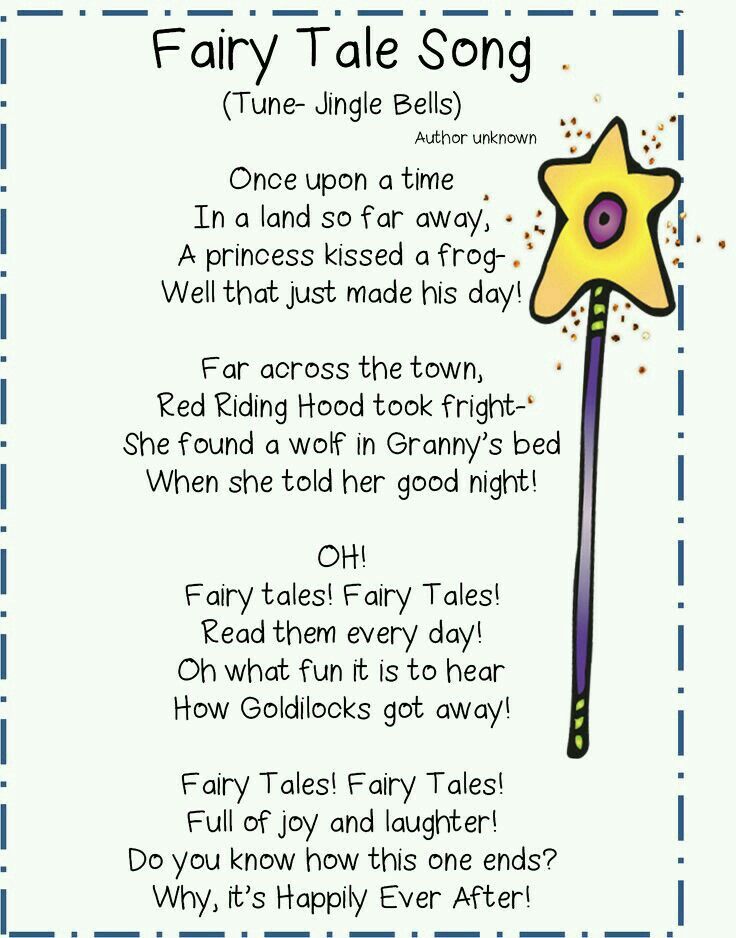 Here are a few of his titles:
Here are a few of his titles:
The Tinder-Box, The Princess and the Pea, Thumbelina, The Little Mermaid, The Emperor’s New Clothes, The Staunch Tin Soldier, Willie Winkie, The Nightingale, The Ugly Duckling, The Snow Queen. (Larsen)
Example 2Brothers Grimm
Jacob Ludwig Carl Grimm and Wilhelm Carl Grimm were German brothers who published their stories in the early 1800s. Here are a few of their titles:
The Good Bargain, Rapunzel, Hansel and Gretel, Cinderella, Little Red Cap, The Bremen Town Musicians, The Robber Bridegroom, The Juniper Tree, Little Brier-Rose, and Little Snow-White. (Ashliman)
More recently, the fairy tale has undergone a resurgence and a reinvention. Many popluar authors have set out to write fairy tales that are more in line with our time. Neil Gaiman is one of these authors. With books like
Stardust and Coraline, he takes the fairy tale to a new place. Kate DiCamillo is another, with The Tale of Despereaux.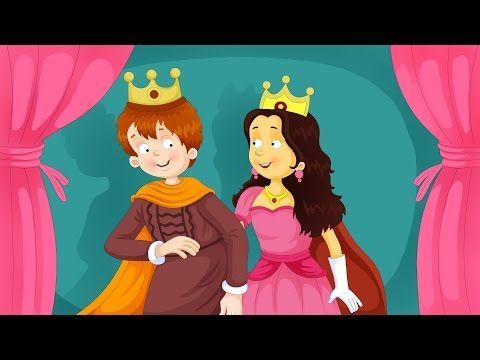 Those are only 3 examples, but the list is long!
Those are only 3 examples, but the list is long!
VI. Examples of Fairy Tales in Popular Culture
We can find fairy tales in every element of our culture. They are, in many ways, given life through popular culture. They appear in books, movies, music, and art. As the fairy tale is such a creative art-form, itself, it is understandable that it would appear in all creative mediums. With each new interpretation or retelling of a fairy tale, we learn a little bit about the story-teller, the audience, the culture and the time in which it is told.
Probably the most recognizable producer of fairy tales in our culture is Walt Disney. Disney has turned the fairy tale into an industry, producing movies, books, toys, clothing, and just about anything else you can think of and branding them with fairy tale characters.
The television show Once Upon A Time is based upon the idea of the fairy tale and uses classic stories in some unique and surprising ways.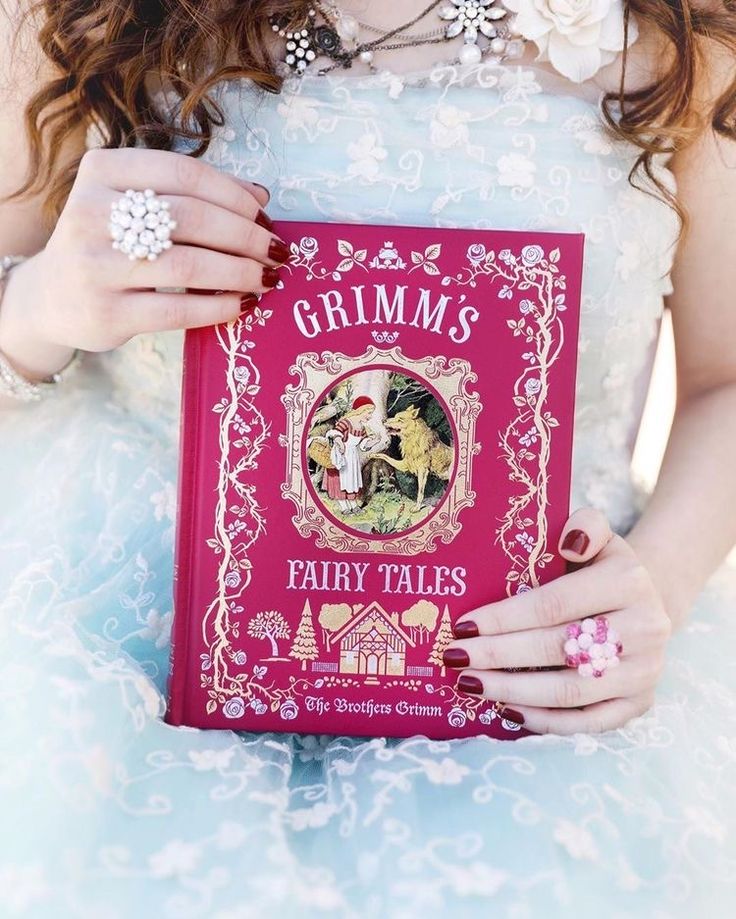
Recently there have been several movies made that tell more gruesome and dark versions of well-known fairy tales. Snow White and the Huntsman, Maleficent and Hansel and Gretel: Witch Hunters are a few of these.
In art, we also find images of fairy tale characters everywhere. Children’s picture books are an abundant source for these works. Picture books make the fairy tales come alive with their images.
fairy tale | Britannica
- Key People:
- Oscar Wilde Hans Christian Andersen E.T.A. Hoffmann Adelbert von Chamisso Giambattista Basile
- Related Topics:
- fable Märchen genre
See all related content →
fairy tale, wonder tale involving marvellous elements and occurrences, though not necessarily about fairies. The term embraces such popular folktales (Märchen, q.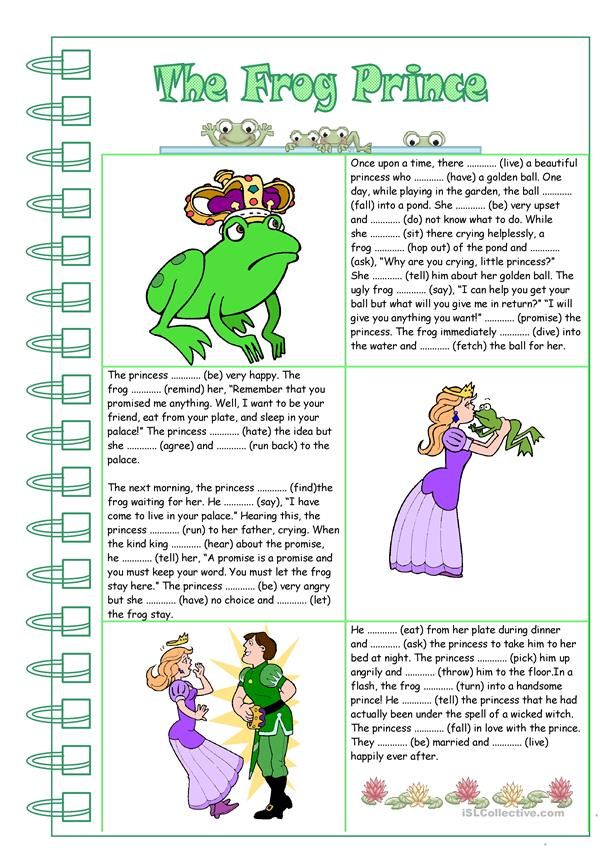 v.) as “Cinderella” and “Puss-in-Boots” and art fairy tales (Kunstmärchen) of later invention, such as The Happy Prince (1888), by the Irish writer Oscar Wilde. It is often difficult to distinguish between tales of literary and oral origin, because folktales have received literary treatment from early times, and, conversely, literary tales have found their way back into the oral tradition. Early Italian collections such as Le piacevoli notti (1550, vol. 1; 1553, vol. 2; “The Pleasant Nights”) of Gianfrancesco Straparola and Il Pentamerone (1636; originally published [1634] in Neapolitan dialect as Lo cunto de li cunti) of Giambattista Basile contain reworkings in a highly literary style of such stories as “Snow White,” “Sleeping Beauty,” and “The Maiden in the Tower.” A later French collection, Charles Perrault’s Contes de ma mère l’oye (1697; Tales of Mother Goose), including “Cinderella,” “Little Red Ridinghood,” and “Beauty and the Beast,” remains faithful to the oral tradition, while the Kinder- und Hausmärchen (1812–15; “Children’s and Household Tales,” generally known as Grimm’s Fairy Tales) of the Brothers Grimm are transcribed directly from oral renderings (although often from literate informants).
v.) as “Cinderella” and “Puss-in-Boots” and art fairy tales (Kunstmärchen) of later invention, such as The Happy Prince (1888), by the Irish writer Oscar Wilde. It is often difficult to distinguish between tales of literary and oral origin, because folktales have received literary treatment from early times, and, conversely, literary tales have found their way back into the oral tradition. Early Italian collections such as Le piacevoli notti (1550, vol. 1; 1553, vol. 2; “The Pleasant Nights”) of Gianfrancesco Straparola and Il Pentamerone (1636; originally published [1634] in Neapolitan dialect as Lo cunto de li cunti) of Giambattista Basile contain reworkings in a highly literary style of such stories as “Snow White,” “Sleeping Beauty,” and “The Maiden in the Tower.” A later French collection, Charles Perrault’s Contes de ma mère l’oye (1697; Tales of Mother Goose), including “Cinderella,” “Little Red Ridinghood,” and “Beauty and the Beast,” remains faithful to the oral tradition, while the Kinder- und Hausmärchen (1812–15; “Children’s and Household Tales,” generally known as Grimm’s Fairy Tales) of the Brothers Grimm are transcribed directly from oral renderings (although often from literate informants). The influence of Perrault and the Grimms has been very great, and their versions have been commonly adopted as nursery tales among literate people in the West. For example, Grimm’s “Rumpelstiltskin” has replaced the native English “Tom Tit Tot,” and Perrault’s “Cinderella” has replaced “Cap o’ Rushes,” once almost equally popular in oral tradition.
The influence of Perrault and the Grimms has been very great, and their versions have been commonly adopted as nursery tales among literate people in the West. For example, Grimm’s “Rumpelstiltskin” has replaced the native English “Tom Tit Tot,” and Perrault’s “Cinderella” has replaced “Cap o’ Rushes,” once almost equally popular in oral tradition.
Art fairy tales were cultivated in the period of German Romanticism by Goethe, Ludwig Tieck, Clemens Brentano, and E.T.A. Hoffmann and in Victorian England by John Ruskin (The King of the Golden River, 1851) and Charles Kingsley (The Water-Babies, 1863), but few of these tales have found permanent popularity. The master of the art fairy tale, whose works rank with the traditional stories in universal popularity, is the Danish writer Hans Christian Andersen. Though his stories have their roots in folk legend, they are personal in style and contain elements of autobiography and contemporary social satire.
Twentieth-century psychologists, notably Sigmund Freud, Carl Jung, and Bruno Bettelheim, have interpreted elements of the fairy tale as manifestations of universal fears and desires.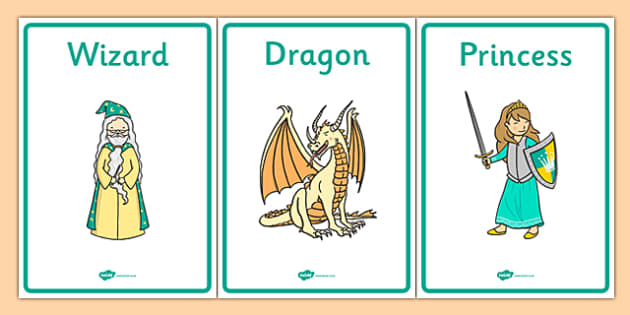 In his Uses of Enchantment (1976), Bettelheim asserted that the apparently cruel and arbitrary nature of many folk fairy stories is actually an instructive reflection of the child’s natural and necessary “killing off” of successive phases of development and initiation.
In his Uses of Enchantment (1976), Bettelheim asserted that the apparently cruel and arbitrary nature of many folk fairy stories is actually an instructive reflection of the child’s natural and necessary “killing off” of successive phases of development and initiation.
What is a fairy tale - "The chest of fairy tales"
The very word "fairy tale" appeared in Russia in the twelfth century. Prior to this, fictional mystical stories that could not happen in real life were called "tales" or "fables". Later, the word "fable" will be used by Ivan Andreevich Krylov for the titles of his satirical works. What is a fairy tale? A fairy tale is a fictional story about good, evil, exploits and adventures, where a good hero always defeats an evil one, and the action takes place in a fictional space (Lukomorye, Far Far Away). Opening a book of fairy tales, the reader is always faced with magic and miracles, which is so lacking in ordinary life. Perhaps that is why fairy tales are widely loved by everyone - both adults and children.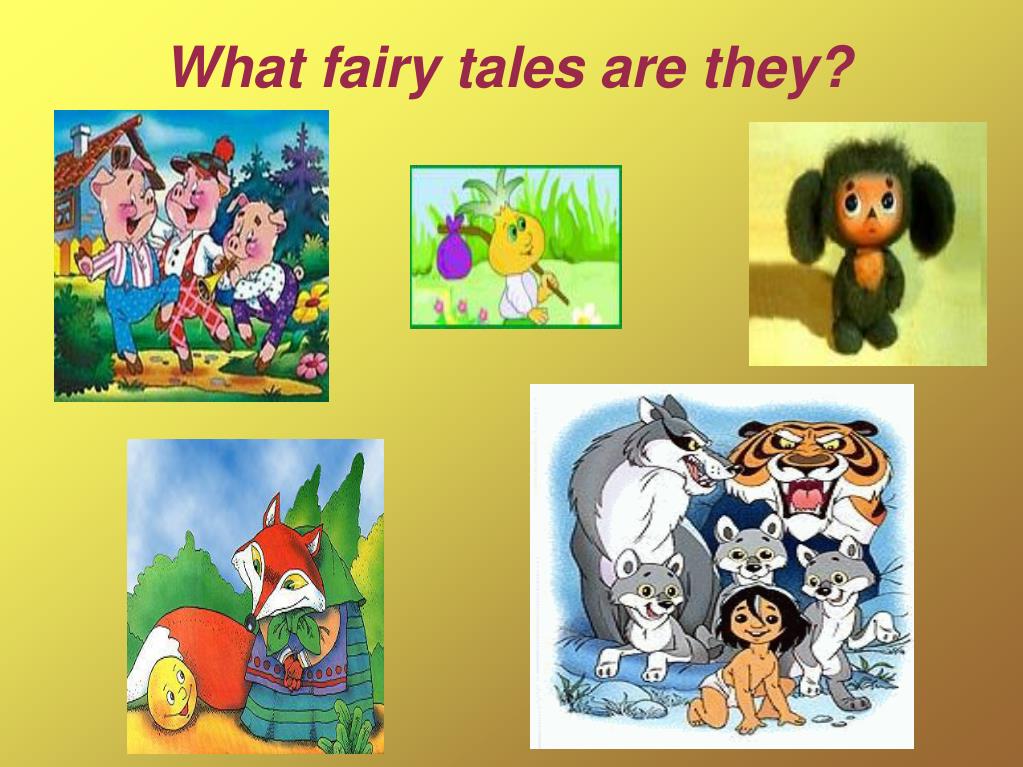 nine0003
nine0003
Tales of the peoples of the world
The world of fairy tales is rich and varied. After all, every nation tried to reflect its way of life, national heroes, culture, traditions in their fairy tales. Fairy tales of any nation are interesting, colorful and unusual. In the tales of the East, the action takes place in vast deserts with quicksand, where evil robbers and cunning genies from magic lamps live.
Mighty heroes, evil Koshchei (whose death is in the needle, and the needle is in the egg, the egg is in the duck...) and harmful kikimora the reader can meet in Russian folk tales. In a European fairy tale, you can see a Magnanimous King or a cruel stepmother, a princess of unprecedented beauty waiting for her lover in captivity and a fairy ready to help the main characters. nine0003
Drum rhythms, savannah and exotic animals (lions, crocodiles, camels) are an integral feature of African fairy tales.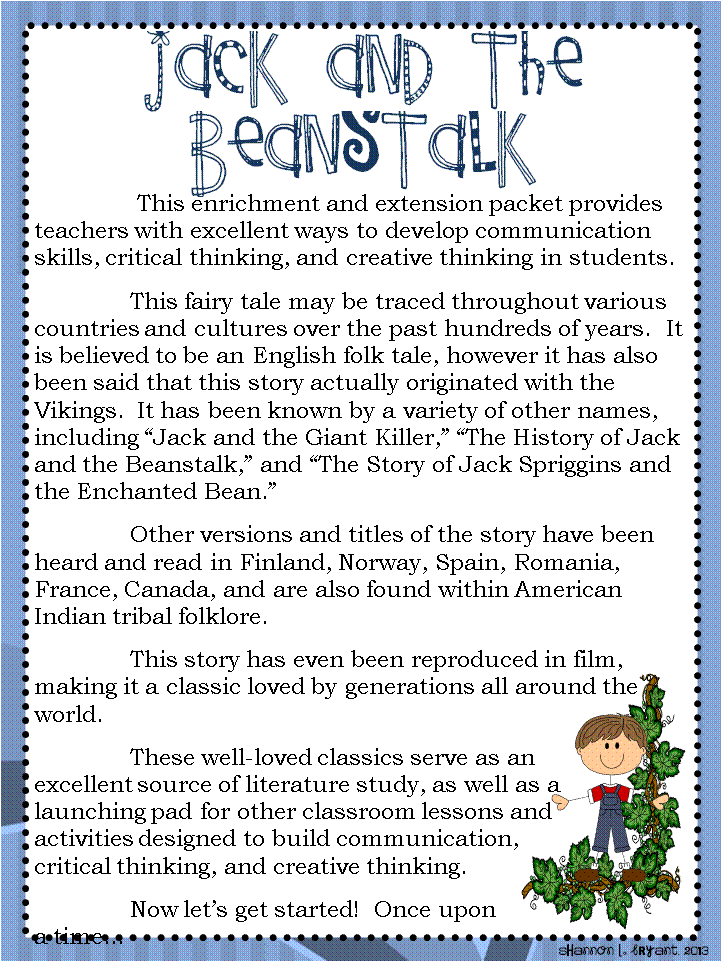 Warrior samurai - the heroes of Japanese fairy tales.
Warrior samurai - the heroes of Japanese fairy tales.
But all the fairy tales of the world have one thing in common - in a simple and accessible language they tell little listeners about life, show how one can be smart even in the most difficult situations, help to understand what good and evil are, develop imagination. So our ancestors told bedtime stories to calm the child, entertain him and dispel fears. nine0003
All fairy tales of the world can be conditionally divided into two categories: author's and folk (they are also called folklore). Famous foreign authors - storytellers and their works: Charles Perrault and his "Puss in Boots", the Brothers Grimm - "The Bremen Town Musicians", Rudyard Kipling - "The Jungle Book". Among Russian authors, perhaps the most famous are: A.S. Pushkin - "The Tale of Tsar Saltan" is known not only to children, but also to adults. Alexei Tolstoy, who wrote "The Golden Key or the Adventures of Pinocchio", S.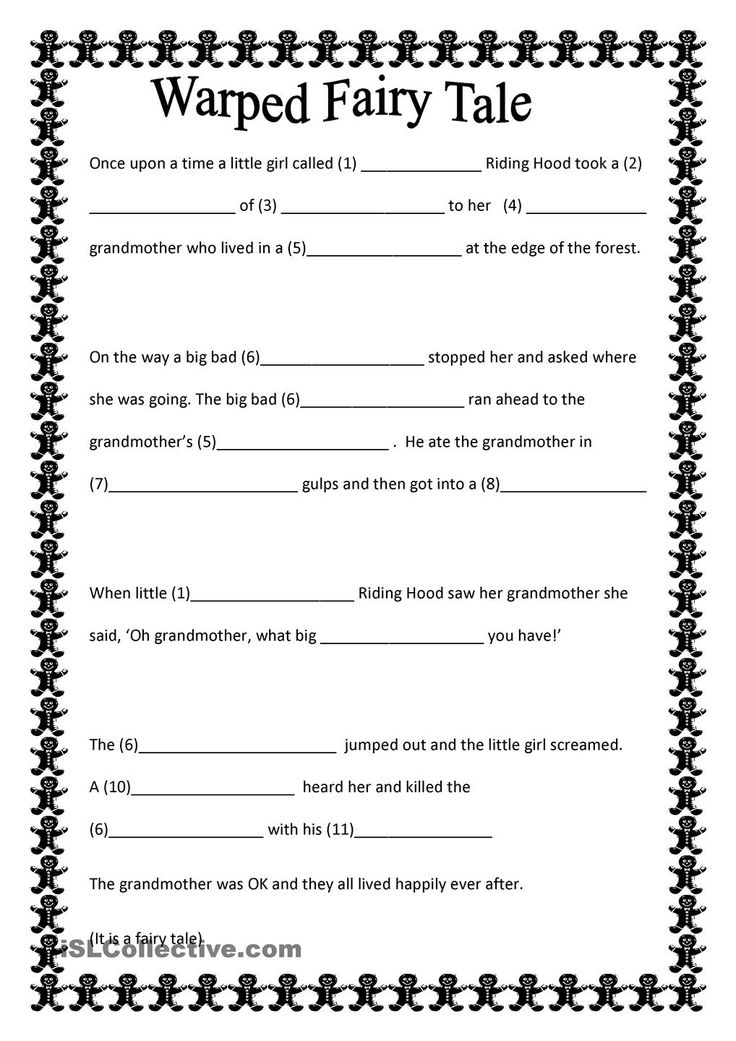 Ya. Marshak and his fairy tale "Twelve Months" are somewhat reminiscent of the Russian folk tale "Morozko". nine0003
Ya. Marshak and his fairy tale "Twelve Months" are somewhat reminiscent of the Russian folk tale "Morozko". nine0003
Russian folk tales
Speaking about the fairy tales of the peoples of the world, one cannot fail to mention the amazing Russian folk tales. The name "folk" tales are because they were passed down from generation to generation. New people constantly supplemented and brought something of their own to them. But the meaning of the tale has not changed. A distinctive feature of such fairy tales can rightly be called their smoothness, melodiousness and melody. It is not surprising that such fairy tales want to be told to children at night. nine0003
The author of Russian folk tales was the people - ordinary people, often living in poverty. They often reflected their dreams in fairy tales. This is how a tablecloth appeared - a self-assembly that allows you to arrange a "feast for the whole world" anywhere, a carpet - an airplane and boots - runners that deliver the hero to any point, various richly decorated palaces.
Who do Russian folk tales tell the reader about? Of course, first of all, about the people: good fellows and beautiful girls. The heroes of fairy tales face obstacles in the form of Baba Yaga or Koshchei the Immortal, as well as other fictional characters. But after the trials passed, good triumphs over evil. A striking example of such a fairy tale is "Morozko". According to the plot, the kind, sympathetic and modest stepdaughter Nastenka, left by her father to perish in the winter forest, not only survives, but also receives valuable gifts from Morozko's character. And her greedy and evil stepmother and sister are left with nothing. The work ridicules stupidity, greed and idleness. It also condemns the lack of compassion and envy. The child, after reading the fairy tale "Morozko", will learn to determine the line between good and evil. nine0003
In addition to the common people, Russian fairy tales tell about a variety of animals that have all human qualities.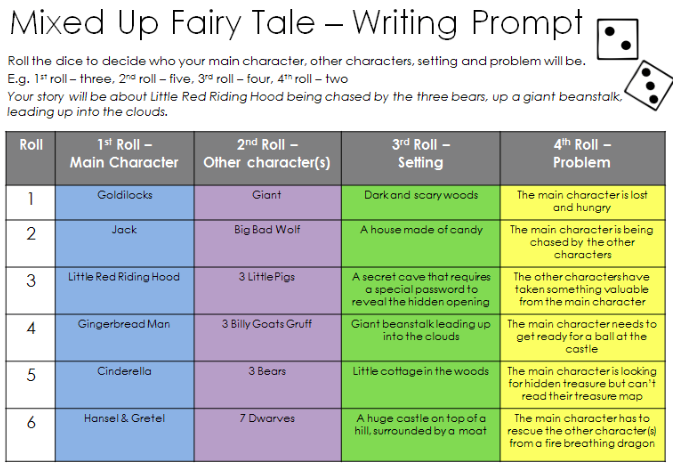 Moreover, each animal is assigned a certain human quality. So in fairy tales, the fox is always cunning, the hare is afraid of everyone, the bear, even with outward clumsiness, is respected among other animals, resolves disputes between them. And the wolf - terrifies the small forest animals. An example of such a fairy tale is "The Fox and the Crane". The main idea of the fairy tale is that you need to treat others the same way as you treat yourself. The fairy tale teaches the child the basics of friendship, the fact that having cheated once, you can be left without a friend. There are fairy tales where people act together with animals, together. For example, the fairy tale "Turnip" - the main characters together pull out a very large turnip and cannot cope until they call the mouse. The tale teaches young readers that there are no unimportant characters, and that sometimes even a small mouse can benefit a big cause. In addition, the tale shows that you need to act together, together.
Moreover, each animal is assigned a certain human quality. So in fairy tales, the fox is always cunning, the hare is afraid of everyone, the bear, even with outward clumsiness, is respected among other animals, resolves disputes between them. And the wolf - terrifies the small forest animals. An example of such a fairy tale is "The Fox and the Crane". The main idea of the fairy tale is that you need to treat others the same way as you treat yourself. The fairy tale teaches the child the basics of friendship, the fact that having cheated once, you can be left without a friend. There are fairy tales where people act together with animals, together. For example, the fairy tale "Turnip" - the main characters together pull out a very large turnip and cannot cope until they call the mouse. The tale teaches young readers that there are no unimportant characters, and that sometimes even a small mouse can benefit a big cause. In addition, the tale shows that you need to act together, together.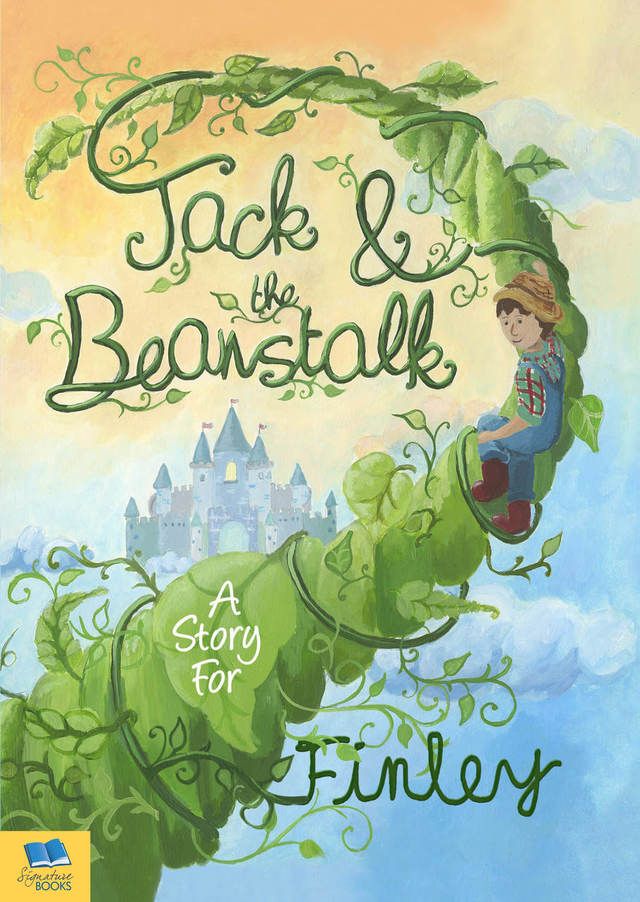 nine0003
nine0003
Another piece of Russian folklore is the fairy tale Kolobok. A stupid bun runs away from grandparents and will pay with his life for his stupidity and boasting. It is noteworthy that many animals were going to eat the kolobok, but only a cunning fox succeeded. The moral of this tale is that not all questions and problems in life are solved by force, because there were also stronger contenders (wolf, bear). Sometimes, in order to achieve something, you need to be smart. There are many more amazing and instructive Russian folk tales. There is an opinion that the fairy tales of Alexander Sergeevich Pushkin are a poetic presentation of Russian folk tales told to Pushkin in childhood by his nanny, Arina Rodionovna. Fairy tales are a great cultural heritage that must be passed on to children. Reading fairy tales is a great pastime for adults. nine0003
With sincere faith in goodness,
Your "Cabin of fairy tales".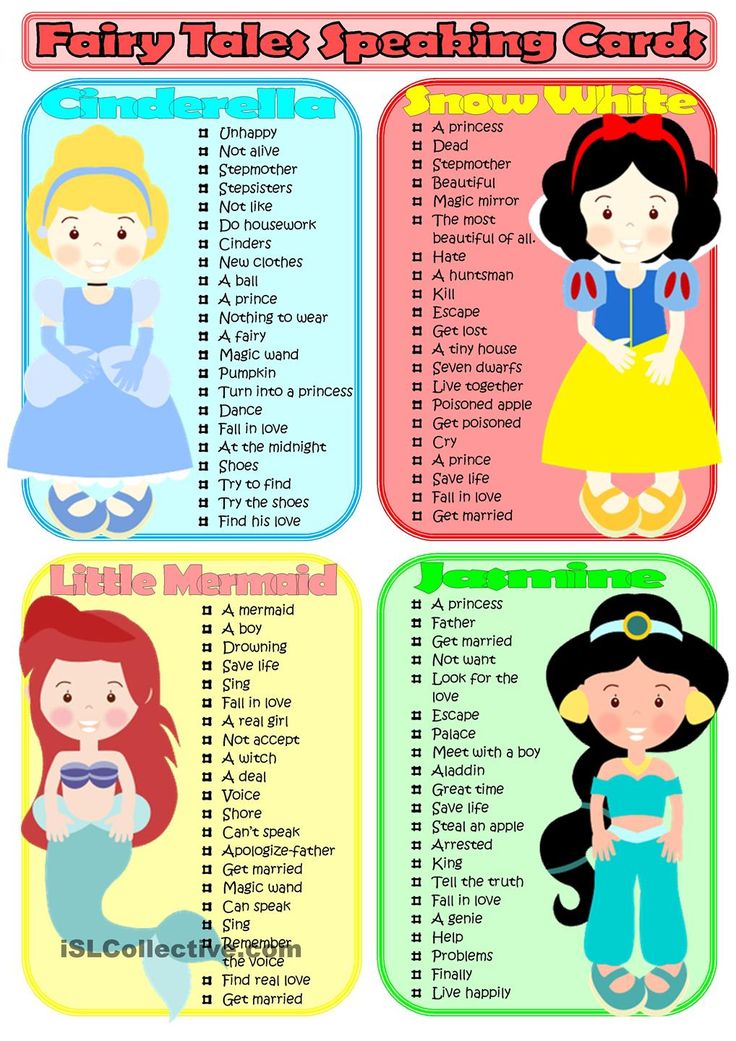
Fairy tale | this is... What is a Fairy Tale?
This term has other meanings, see Fairy tale (meanings).
Thumb boy and Giant. Illustration from 1865.
Fairy tale — genre of literary creativity:
1. Folk tale — epic genre of written and oral folk art: a prosaic oral story about fictitious events in the folklore of different peoples [1] . A kind of narrative, mostly prose folklore ( fairy-tale prose ), which includes works of various genres, the texts of which are based on fiction. Fairy-tale folklore is opposed to "reliable" folklore narrative ( non-fairytale prose ) (see myth, epic, historical song, spiritual poems, legend, demonological stories, tale, tradition, bylichka).
2. Literary fairy tale — epic genre: fiction-oriented work, closely related to the folk tale, but, unlike it, belonging to a specific author, which did not exist before publication in oral form and had no variants [2] .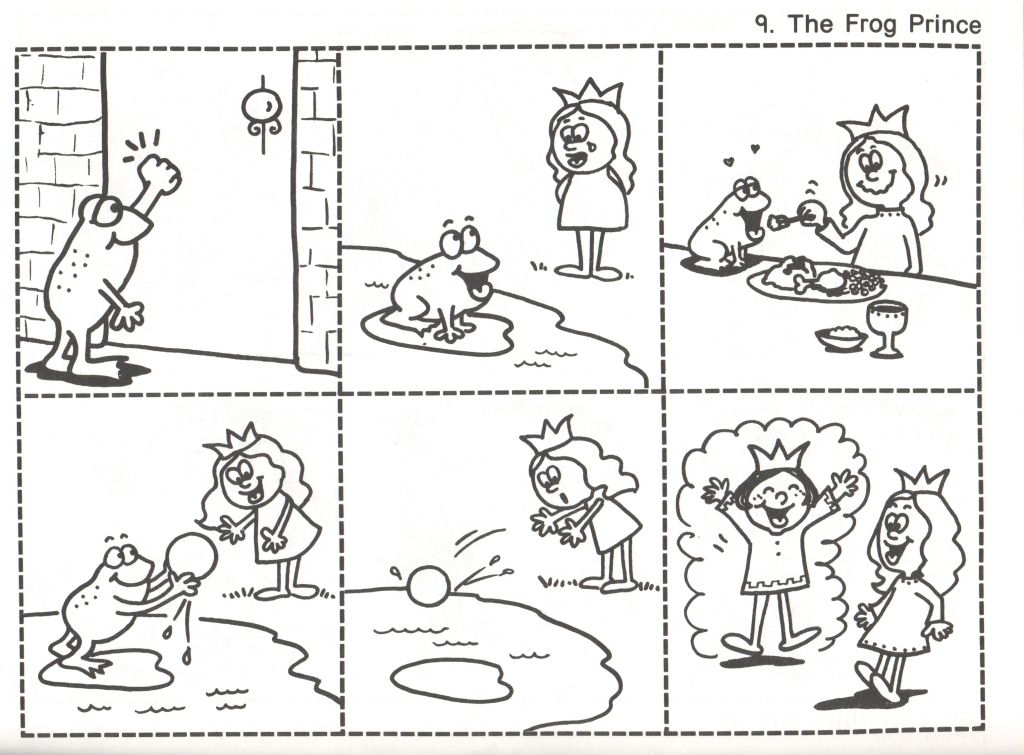 A literary fairy tale either imitates a folklore one ( literary fairy tale written in the folk poetic style ) or creates a didactic work (see didactic literature) based on non-folklore plots. The folk tale historically precedes the literary one.
A literary fairy tale either imitates a folklore one ( literary fairy tale written in the folk poetic style ) or creates a didactic work (see didactic literature) based on non-folklore plots. The folk tale historically precedes the literary one.
The word " fairy tale " is attested in written sources no earlier than the 17th century. From the word " say " [3] . It mattered: a list, a list, an exact description. It acquires modern significance from the 17th-19th centuries. Previously, the word fable was used, until the 11th century - blasphemer [ source unspecified 1295 days ] .
The word “fairy tale” suggests that they learn about it, “what it is” and find out “for what” it, a fairy tale, is needed. A fairy tale with a purpose is needed for the subconscious or conscious teaching of a child in the family the rules and purpose of life, the need to protect their "area" and a worthy attitude towards other communities. It is noteworthy that both the saga and the fairy tale carry a colossal information component, passed down from generation to generation, faith in which is based on respect for one's ancestors.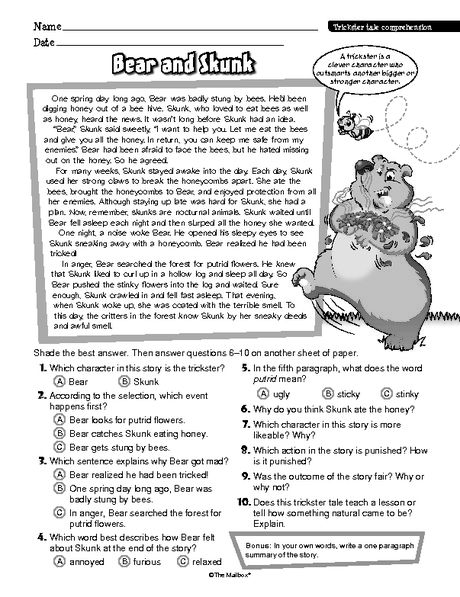 nine0003
nine0003
|
Contents
|
Folk tale
V. M. Vasnetsov "Princess Nesmeyana".
Folklore fairy tale based on a traditional plot belongs to prosaic folklore (fairy tale prose). The myth, having lost its functions, has become a fairy tale.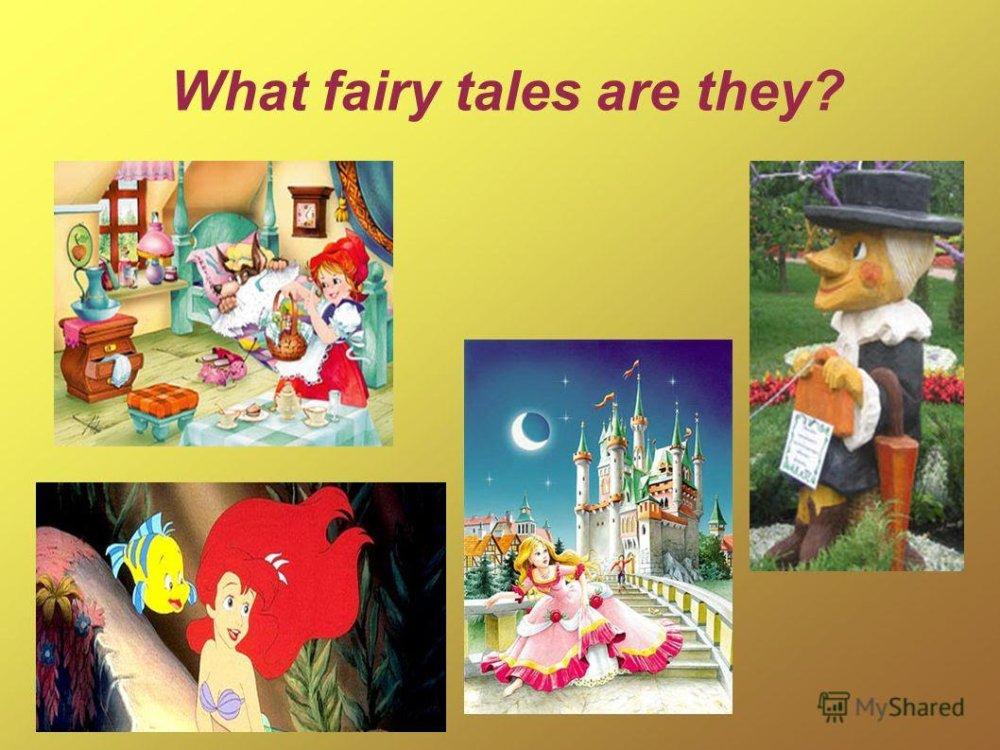 Initially, the fairy tale, separated from the myth, opposed the myth as:
Initially, the fairy tale, separated from the myth, opposed the myth as:
- Profane — Sacred . The myth is connected with the ritual, therefore the myth, at a certain time and in a certain place, reveals secret knowledge to the initiates;
- Non-strict certainty — Strong certainty . The departure of the fairy tale from the ethnographic nature of the myth led to the fact that the artistic side of the myth came to the fore in the fairy tale. The tale was "interested" in the fascination of the plot. The historicity (quasi-historicity) of the myth has become irrelevant for the fairy tale. The events of the fairy tale take place outside the geographic confinement within the framework of the fairy tale geography. nine0082
Folk tale has its own specific poetics, which was insisted on by A. I. Nikiforov and V. Ya. Propp.
- “Once upon a time…”, “In a certain kingdom, in a certain state…” — fabulous initials, beginnings;
- "Soon a fairy tale is told, but not soon the deed is done" - median formulas;
- “And I was there, drinking honey-beer, flowing down my mustache, but it didn’t get into my mouth”, “A fairy tale is a lie, but there is a hint in it, a lesson for good fellows”, - fairy tale ending, finale; nine0082
- The arrival of Ivan Tsarevich to Baba Yaga, where prose is interspersed with rhythmic passages:
- Cliched description of the portrait - "Baba Yaga, bone leg";
- Cliched formulaic questions-answers — “Where are you going?”
- A clichéd description of the scene: “on the viburnum bridge, on the currant river”; nine0082
- Cliched description of actions: moving the hero on a "flying carpet";
- General folklore epithets: “beautiful girl”, “good fellow”.

A folklore fairy tale meets three requirements of folklore existence (general folklore features):
- Orality.
- Collectivity.
- Anonymity.
The plot of a folk tale, in contrast to the plot of a literary tale, exists in a variety of texts in which some degree of improvisation by the performer of fairy material is allowed. The texts of a folklore tale oppose each other in terms of the degree of similarity-dissimilarity as a variant-variation. In fairy tale science, the problem of avant-text is posed, the solution of which solves the question of the creative skill of the performer of fairy folklore, because he does not memorize the text of the fairy tale in its entirety, but generates the text in front of the audience, restoring the structural elements of the text - thematic (motives) and stylistic ("common places" , formulas, etc.). The narrator kept in his memory fairy tales in their entirety or in the form of plot units, the so-called. motive, and reproduced in the performed fairy tale. Fairy tale science listed all the discovered fairy tales, collecting them in compiled pointers . Some fairy-tale plots are found in one text (plot contamination). The narrator, to give an epic slowdown, used the technique of tripling the action in a fairy tale. In fairy tales, there is a constant search for a method for a complete description of the structure of the text f. with. For a convenient description of the text, researchers distinguish, in addition to the compositional-plot and stylistic levels of the text, also the ideological-thematic and figurative levels. In archaic times (the collapse of the primitive communal system) f. with. resembled a myth ( mythological tale or myth-tale ), however, the late classic tale preserved relics of mythological consciousness. The task of folklore, as an interdisciplinary science, standing on the border of linguistics, literary criticism, ethnography, is to reveal these relics in the text.
motive, and reproduced in the performed fairy tale. Fairy tale science listed all the discovered fairy tales, collecting them in compiled pointers . Some fairy-tale plots are found in one text (plot contamination). The narrator, to give an epic slowdown, used the technique of tripling the action in a fairy tale. In fairy tales, there is a constant search for a method for a complete description of the structure of the text f. with. For a convenient description of the text, researchers distinguish, in addition to the compositional-plot and stylistic levels of the text, also the ideological-thematic and figurative levels. In archaic times (the collapse of the primitive communal system) f. with. resembled a myth ( mythological tale or myth-tale ), however, the late classic tale preserved relics of mythological consciousness. The task of folklore, as an interdisciplinary science, standing on the border of linguistics, literary criticism, ethnography, is to reveal these relics in the text.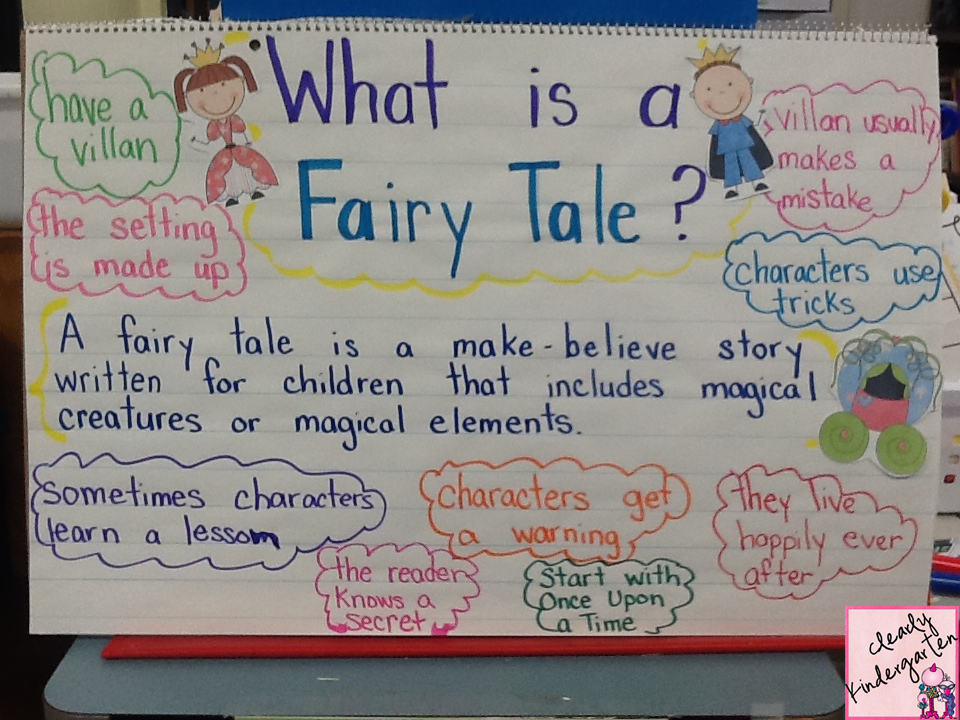
Classification of a folk tale
A folk tale includes several genres (according to another classification, genre varieties of one fairy tale genre). In the science of fairy tales, there is a problem of classification of fairy tale genres. In the "Comparative Index of Plots: East Slavic Fairy Tale", created on the basis of Aarne's index, which systematizes the European, and then, in subsequent editions, Stit Thompson (Thompson Stith) (see Index of Folk Tale Plots), fairy tale of the peoples of the world, the following genres are presented fairy folklore:
- Tales about animals, plants, inanimate nature and objects.
- Fairy tales.
- Legendary tales.
- Short story (everyday) fairy tales.
- Tales of the Fooled Devil.
- Jokes.
- Fables.
- Cumulative tales.
- Boring tales.
Many folklorists (V. Ya. Propp, E. V. Pomerantseva, Yu. I. Yudin, T. V. Zueva) distinguish two genre varieties in the composition of the genre "Everyday fairy tales": novelistic and anecdotal fairy tales.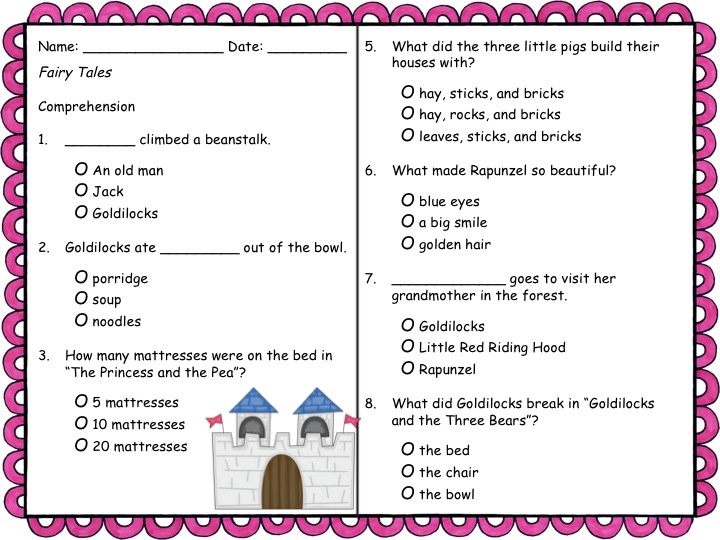 Anecdotal tales include plots from the "Tales of the Fooled Devil" group, many plots classified as anecdotes, some plots included in the novelistic tales section, and some plots classified as fairy tales. nine0003
Anecdotal tales include plots from the "Tales of the Fooled Devil" group, many plots classified as anecdotes, some plots included in the novelistic tales section, and some plots classified as fairy tales. nine0003
In narrative folklore, it is not always possible to draw a clear line between genres. So, a legendary fairy tale can combine the features of a fairy tale and a legend, and prosaic alterations of epics can be attributed to a special genre group “A heroic fairy tale”. A change in the attitude of folklore carriers to reality changes the affiliation of the narrative to one or another folklore genre.
Genre varieties of the fairy tale
Fairy tale about animals
Fairy tale about animals (animal epic) is a collection (conglomerate) of different genres of fairy tale folklore (fairy tale), in which animals, birds, fish, as well as objects, plants and natural phenomena act as the main characters. In fairy tales about animals, a person either 1) plays a secondary role (the old man from the fairy tale “The Fox steals fish from the cart (sleigh”)), or 2) occupies a position equivalent to the animal (the man from the fairy tale “Old bread and salt is forgotten”).
Possible classification of the fairy tale about animals. nine0003
First of all, the animal tale is classified according to the main character (thematic classification). Such a classification is given in the index of fairy-tale plots of world folklore compiled by Aarne-Thompson and in the Comparative Index of Plots. East Slavic fairy tale»:
- Wild animals.
- Fox.
- Other wild animals.
- Wild and domestic animals
- Man and wild animals.
- Pets. nine0082
- Birds and fish.
- Other animals, objects, plants and natural phenomena.
The next possible classification of the fairy tale about animals is the structural-semantic classification, which classifies the fairy tale according to genre. There are several genres in the fairy tale about animals. V. Ya. Propp singled out such genres as:
- Cumulative fairy tale about animals.
- Magic fairy tale about animals
- Fable (apologist)
- Satirical tale
E.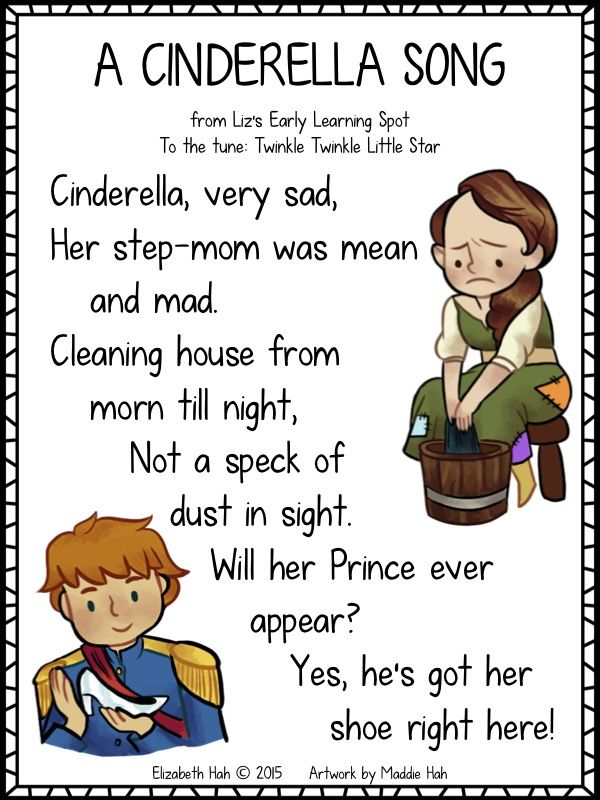 A. Kostyukhin singled out genres about animals as:
A. Kostyukhin singled out genres about animals as:
- Comic (everyday) fairy tale about animals
- Magic fairy tale about animals
- Cumulative Animal Tale
- Animal short story
- Apologist (fable)
- Joke.
- Satirical Animal Tale
- Legends, stories, everyday stories about animals
- Fables
Propp, in his classification of animal tales by genre, tried to put a formal sign. Kostyukhin, on the other hand, partly based his classification on a formal feature, but basically the researcher divides the genres of fairy tales about animals according to content. This allows a deeper understanding of the diverse material of the fairy tale about animals, which demonstrates the variety of structural constructions, the diversity of styles, and the richness of content. nine0003
The third possible classification of the animal tale is that of the target audience. Allocate fairy tales about animals to:
- Children's fairy tales.
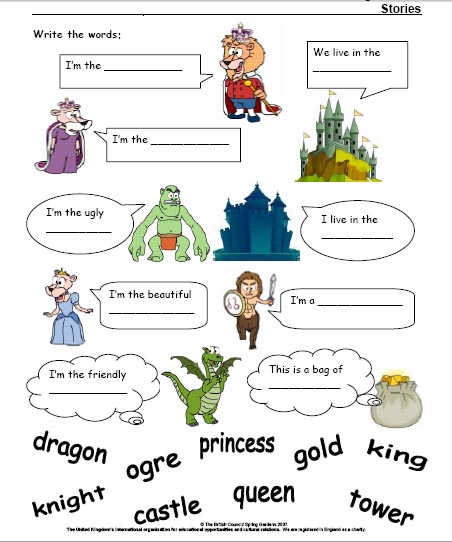
- Tales told for children.
- Fairy tales told by children.
№ - Adult fairy tales.
One or another genre of fairy tale about animals has its own target audience. The modern Russian fairy tale about animals mainly belongs to the children's audience. Thus, fairy tales told for children have a simplified structure. But there is a genre of fairy tale about animals that will never be addressed to children - this is the so-called. "Mischievous" ("cherished" or "pornographic") tale. nine0003
About twenty plots of animal tales are cumulative tales ( Recursive ). The principle of such a composition is the repeated repetition of a plot unit. Thompson, S., Bolte, J. and Polivka, I., Propp singled out fairy tales with a cumulative composition into a special group of fairy tales. Cumulative (chain-like) composition is distinguished:
- With infinite repetition:
- Boring tales like "About the White Bull".
- The text unit is included in another text ("The priest had a dog").
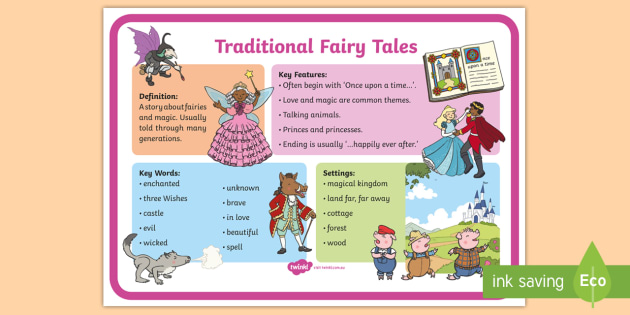 nine0082
nine0082
- With End Repeat:
- "Turnip" - plot units grow in a chain until the chain breaks.
- "Cockerel choked" - the chain is untwisted until the chain breaks.
- "For a rolling pin duck" - the previous unit of text is denied in the next episode.
Another genre form of the animal tale is the structure of the fairy tale (see below for the structure) (The Wolf and the Seven Kids SUS 123, The Cat, the Rooster and the Fox SUS 61 B). nine0003
The leading place in fairy tales about animals is occupied by comic tales - about the tricks of animals ("A fox steals fish from a sleigh (from a wagon) SUS 1, "The Wolf at the Hole" SUS 2, "The fox smears his head with dough (sour cream) SUS 3," Beaten the unbeaten one is lucky" SUS 4, "The Midwife Fox" SUS 15, etc.), which influence other fabulous genres of the animal epic, especially the apologist (fable). The plot core of a comic fairy tale about animals is a chance meeting and a trick (deception, according to Propp).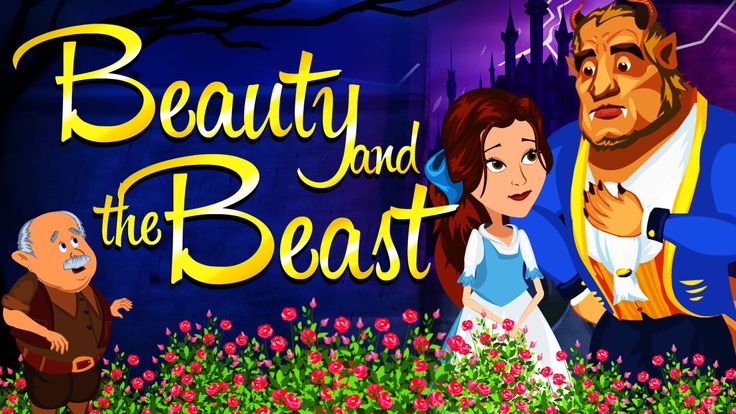 Sometimes several meetings and tricks are combined (contamination). The hero of the comic tale is trickster (one who does tricks). The main trickster of the Russian fairy tale is the fox (in the world epic, the hare). Its victims are usually a wolf and a bear. It has been noticed that if the fox acts against the weak, it loses, if against the strong, it wins (Dm. Moldavsky). It comes from archaic folklore. In the modern animal tale, the victory and defeat of the trickster often receives a moral assessment. The trickster in the tale is opposed to by the simpleton . It can be a predator (wolf, bear), and a person, and a simpleton animal, like a hare. nine0003
Sometimes several meetings and tricks are combined (contamination). The hero of the comic tale is trickster (one who does tricks). The main trickster of the Russian fairy tale is the fox (in the world epic, the hare). Its victims are usually a wolf and a bear. It has been noticed that if the fox acts against the weak, it loses, if against the strong, it wins (Dm. Moldavsky). It comes from archaic folklore. In the modern animal tale, the victory and defeat of the trickster often receives a moral assessment. The trickster in the tale is opposed to by the simpleton . It can be a predator (wolf, bear), and a person, and a simpleton animal, like a hare. nine0003
A significant part of fairy tales about animals is occupied by an apologist (fable), in which there is not a comic principle, but a moralizing, moralizing one. At the same time, the apologist does not have to have a moral in the form of an ending. Morality follows from the plot situations. Situations must be unambiguous in order to easily form moral conclusions.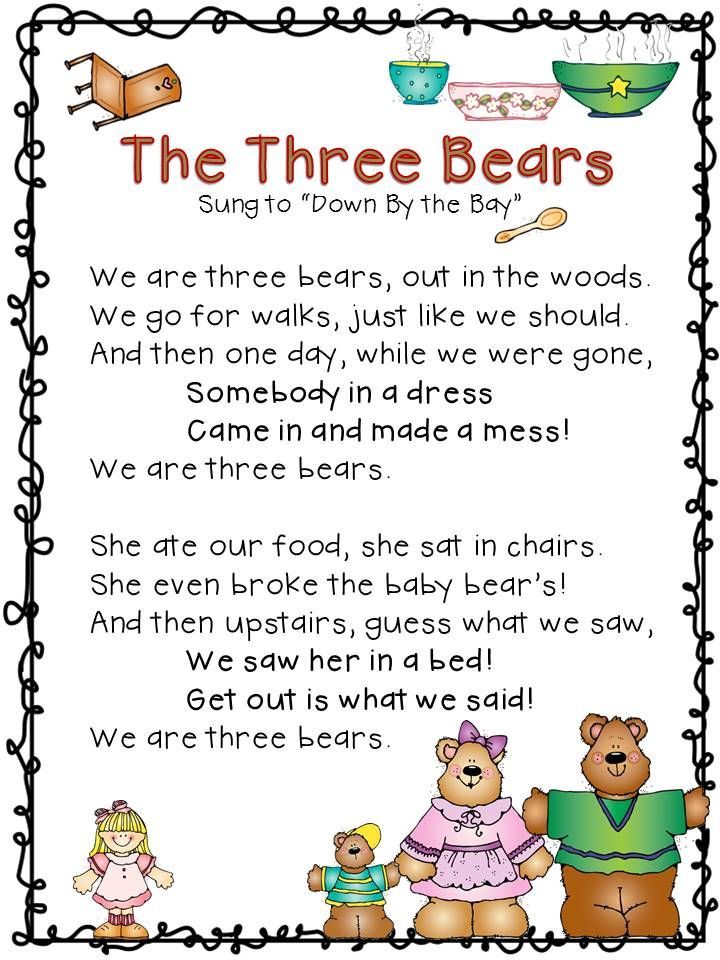 Typical examples of an apologist are fairy tales where contrasting characters collide (Who is more cowardly than a hare? AT 70; Old bread and salt is forgotten AT 155; A splinter in the paw of a bear (lion) AT 156. An apologist can also be considered such plots that were known in a literary fable from ancient times (Fox and sour grapes AT 59; Crow and Fox AT 57 and many others). The apologist is a comparatively late form of animal tales. Refers to the time when moral norms have already been determined and are looking for a suitable form for themselves. In fairy tales of this type, only a few plots with the tricksters' tricks were transformed, part of the plots of the apologist (not without the influence of literature) he worked out himself. The third way for the development of the apologist is the growth of paremia (proverbs and sayings. But unlike paremia, in the apologist the allegory is not only rational, but also sensitive.
Typical examples of an apologist are fairy tales where contrasting characters collide (Who is more cowardly than a hare? AT 70; Old bread and salt is forgotten AT 155; A splinter in the paw of a bear (lion) AT 156. An apologist can also be considered such plots that were known in a literary fable from ancient times (Fox and sour grapes AT 59; Crow and Fox AT 57 and many others). The apologist is a comparatively late form of animal tales. Refers to the time when moral norms have already been determined and are looking for a suitable form for themselves. In fairy tales of this type, only a few plots with the tricksters' tricks were transformed, part of the plots of the apologist (not without the influence of literature) he worked out himself. The third way for the development of the apologist is the growth of paremia (proverbs and sayings. But unlike paremia, in the apologist the allegory is not only rational, but also sensitive.
Next to the apologist is the so-called short story about animals, highlighted by E.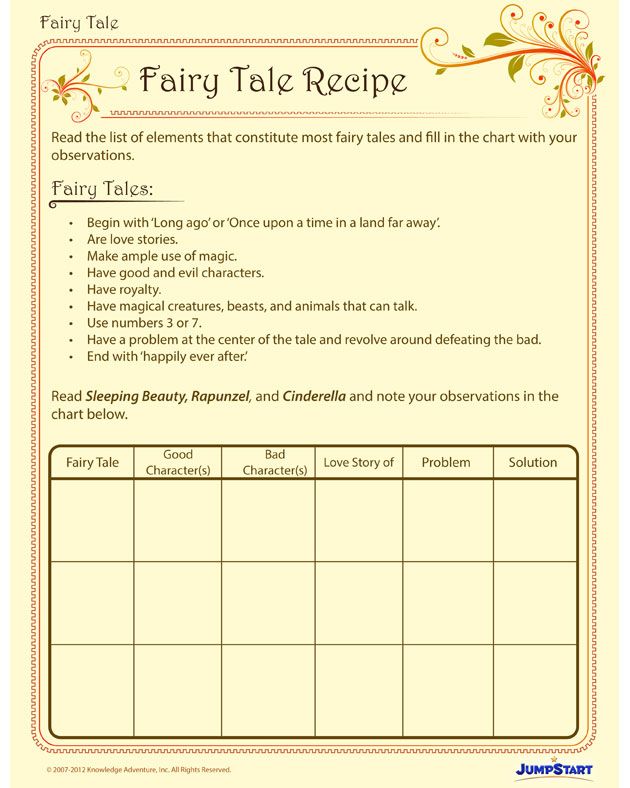 A. Kostyukhin. A short story in an animal tale is a story about unusual cases with a fairly developed intrigue, with sharp turns in the fate of the characters. The trend towards moralization determines the fate of the genre. It has a more definite morality than in the apologist, the comic beginning is muted, or completely removed. The mischief of the comic fairy tale about animals is replaced in the short story with a different content - entertaining. A classic example of a novelistic tale about animals is AT 160 "Grateful Beasts". Most of the plots of a folklore short story about animals are formed in literature, and then pass into folklore. The easy transition of these plots is due to the fact that the literary plots themselves are formed on a folklore basis. nine0003
A. Kostyukhin. A short story in an animal tale is a story about unusual cases with a fairly developed intrigue, with sharp turns in the fate of the characters. The trend towards moralization determines the fate of the genre. It has a more definite morality than in the apologist, the comic beginning is muted, or completely removed. The mischief of the comic fairy tale about animals is replaced in the short story with a different content - entertaining. A classic example of a novelistic tale about animals is AT 160 "Grateful Beasts". Most of the plots of a folklore short story about animals are formed in literature, and then pass into folklore. The easy transition of these plots is due to the fact that the literary plots themselves are formed on a folklore basis. nine0003
Speaking of satire in fairy tales about animals, it must be said that literature once gave impetus to the development of satirical fairy tales. The condition for the appearance of a satirical tale occurs in the late Middle Ages.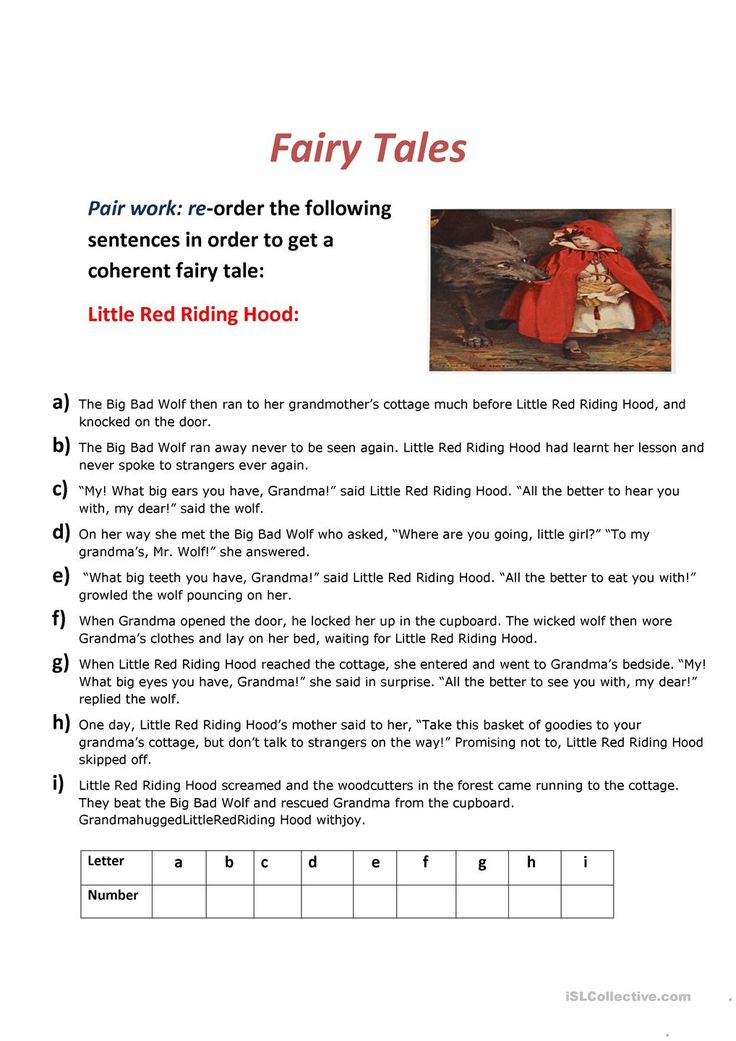 The satirical effect in a folk tale is achieved by putting social terminology into the mouths of animals (Confessor Fox AT 61 A; Cat and Wild Animals AT 103). The plot of AT 254 ** "Ruff Ershovich", which is a fairy tale of book origin, stands apart. Having appeared late in a folk tale, satire did not gain a foothold in it, since social terminology can easily be removed from a satirical tale. So in the 19th century, a satirical tale is unpopular. The satire within the animal tale is only an accent in a very small group of animal stories. And the laws of the animal fairy tale with trickster tricks influenced the satirical tale. The satirical sound was preserved in fairy tales, where the trickster was in the center, and where there was a complete absurdity of what was happening, then the fairy tale became a fiction. nine0003
The satirical effect in a folk tale is achieved by putting social terminology into the mouths of animals (Confessor Fox AT 61 A; Cat and Wild Animals AT 103). The plot of AT 254 ** "Ruff Ershovich", which is a fairy tale of book origin, stands apart. Having appeared late in a folk tale, satire did not gain a foothold in it, since social terminology can easily be removed from a satirical tale. So in the 19th century, a satirical tale is unpopular. The satire within the animal tale is only an accent in a very small group of animal stories. And the laws of the animal fairy tale with trickster tricks influenced the satirical tale. The satirical sound was preserved in fairy tales, where the trickster was in the center, and where there was a complete absurdity of what was happening, then the fairy tale became a fiction. nine0003
Fairy tale
V. M. Vasnetsov "The Frog Princess". 1918.
Fairy tale is based on a complex composition, which has an exposition, plot, plot development, climax and denouement (see also Conflict (literary criticism).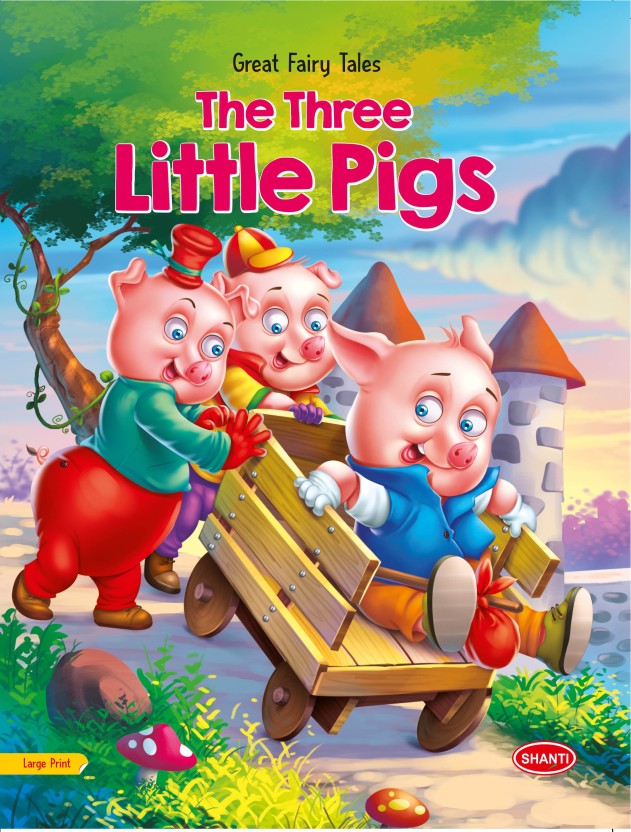 According to Propp, it comes from the rite of initiation.
According to Propp, it comes from the rite of initiation.
Gorokhova E. horse- 1979
The plot of a fairy tale is based on a story about overcoming a loss or lack, with the help of miraculous means or magical helpers. with brothers or sisters. Also in the exposition there is an absence of the older generation. An enhanced form of absence is the death of parents. The plot of the tale is that the main character or heroine discovers a loss or shortage, or there are motives for a ban, a violation of the ban and a subsequent disaster. Here begins counteraction, i.e. sending the hero out of the house.0003
The development of the plot is the search for what is lost or missing.
The climax of the fairy tale is that the protagonist or heroine fights an opposing force and always defeats it (the battle equivalent is solving difficult problems that are always solved).
Decoupling is overcoming a loss or lack. Usually the hero (heroine) at the end "reigns" - that is, acquires a higher social status than he had at the beginning.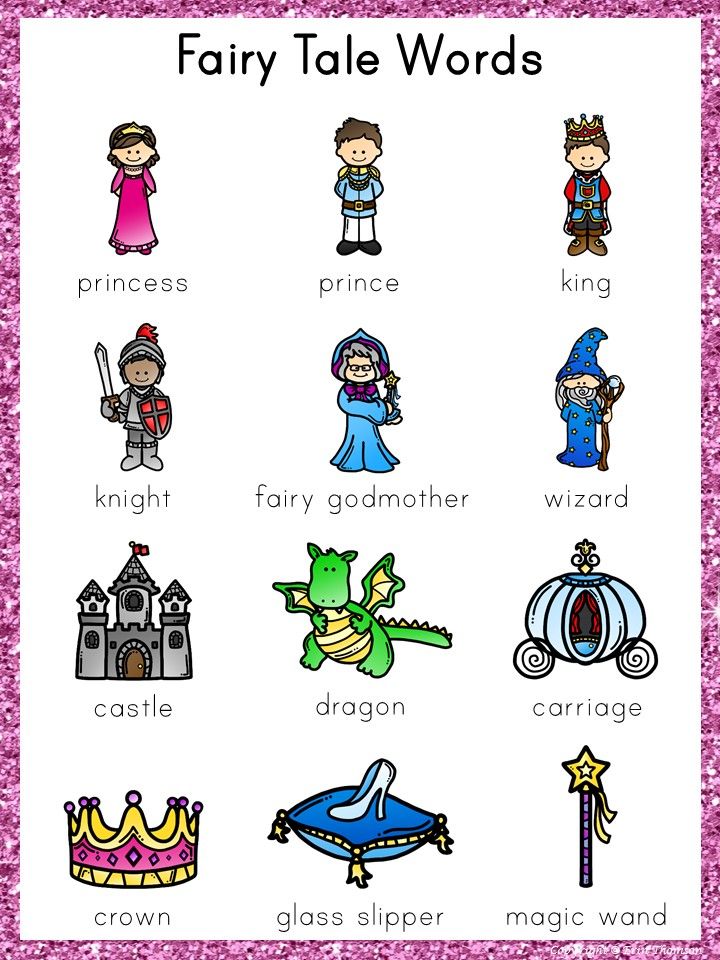
V. Ya. Propp reveals the monotony of a fairy tale at the plot level in a purely syntagmatic plane. It reveals the invariance of a set of functions (the actions of actors), the linear sequence of these functions, as well as a set of roles distributed in a certain way between specific characters and correlated with functions. Functions are distributed among seven characters:
- antagonist (pest),
- donor
- assistant
- princess or her father
- sender
- heroes
- false heroes.
Propp creates the so-called. metascheme of a fairy tale, consisting of 31 functions. Meletinsky E. M., continuing Propp’s research on the genre definition of a fairy tale, combines Propp’s fairy tale functions into large structure-forming units in order to more accurately give a genre definition of a fairy tale. The scientist says that a fairy tale is characterized by such common units presented in all fairy tale texts as ελ .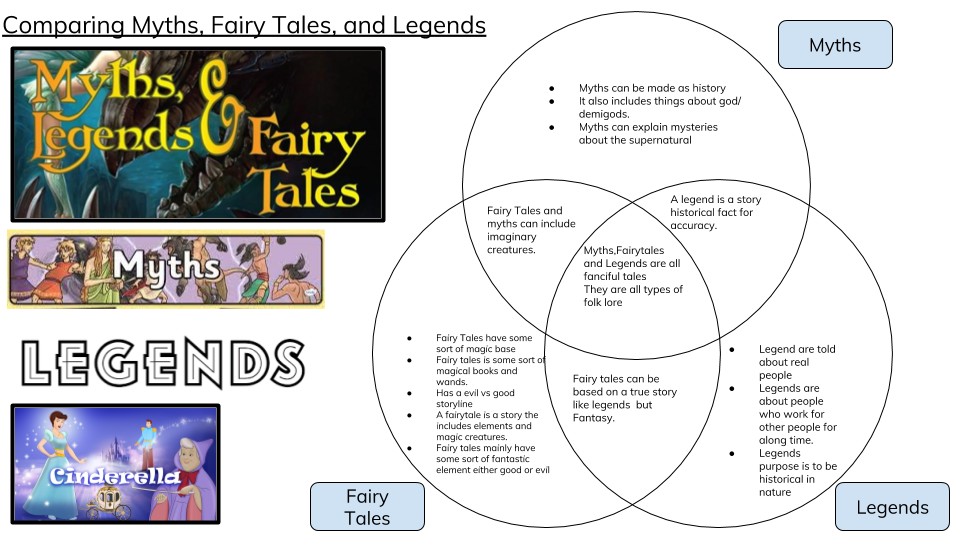 .. EL, where the Greek letters are the test of the hero of the fairy tale by the donor and the reward of the hero (Baba Yaga gives Ivan Tsarevich a magic ball for that he behaved correctly). The Latin letters, in the Meletinsky formula, denote the battle over the antagonist and the victory over him (in the role of the antagonist, Koshchei the Immortal, the Serpent Gorynych acts in the fairy tale). Victory over the antagonist is unthinkable without the help of a magical remedy previously received from the donor. Meletinsky proposes to distinguish not only the genre of a fairy tale, but also to distinguish between its genre types, introducing additional units to determine the genre types of a fairy tale:
.. EL, where the Greek letters are the test of the hero of the fairy tale by the donor and the reward of the hero (Baba Yaga gives Ivan Tsarevich a magic ball for that he behaved correctly). The Latin letters, in the Meletinsky formula, denote the battle over the antagonist and the victory over him (in the role of the antagonist, Koshchei the Immortal, the Serpent Gorynych acts in the fairy tale). Victory over the antagonist is unthinkable without the help of a magical remedy previously received from the donor. Meletinsky proposes to distinguish not only the genre of a fairy tale, but also to distinguish between its genre types, introducing additional units to determine the genre types of a fairy tale:
- presence/absence of an object of struggle independent of the hero (O — O)
- obtaining a marriage partner and a wonderful item (O 1 - O 2 )
- obtaining an object by the hero for himself or for the king, father, family, his community (S - S_)
- familial factor of the main collision (F - F)
- identification of a fairy tale with a distinctly mythological coloring of the demonic world hostile to the hero (M - M).
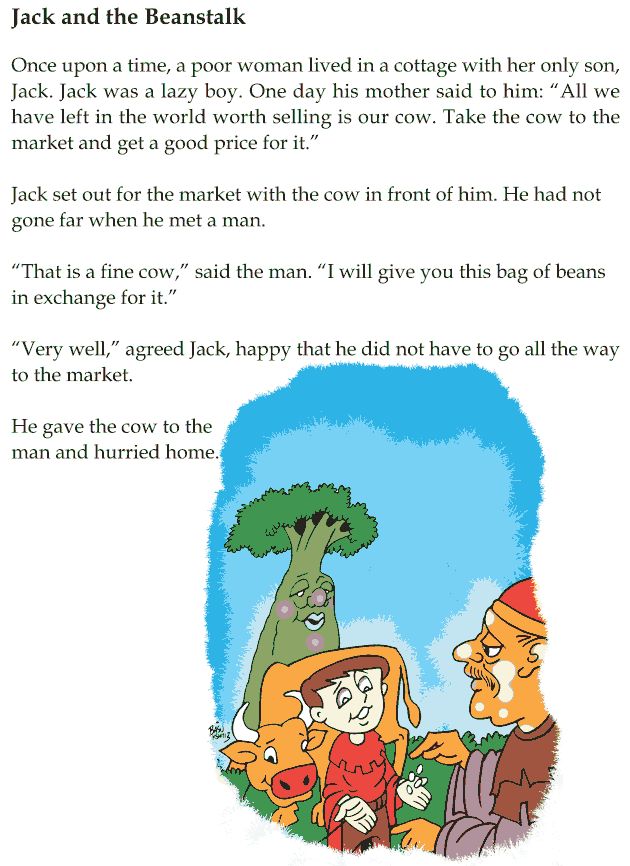
Thanks to these units, five groups of fairy tales can be distinguished:
-
- O 1 SˉFˉM - heroic tales, serpentine type (AT 300-301).
- O 2 SˉFˉM — heroic tales of the quest type (AT 550-551).
- OˉSFˉM - archaic tales of the type "children at the cannibal" (AT 311, 312, 314, 327).
- B 1 DˉSM - tales of family persecuted, given into the power of forest demons (AT 480, 709).
- OˉSFMˉ — tales of the family persecuted without mythical elements (AT 510, 511). nine0097
- O 1 SFˉM - fairy tales about wonderful spouses (AT 400, 425, etc.).
- O 2 SFˉMˉ - tales of miraculous objects (AT 560, 563, 566, 569, 736).
- O 1 SFˉMˉ- fairy tales about wedding trials (AT 530, 570, 575, 577, 580, 610, 621, 675).
- O 1 SˉFˉMˉ — (AT 408, 653).
- O 2 SˉFˉMˉ — (AT 665).
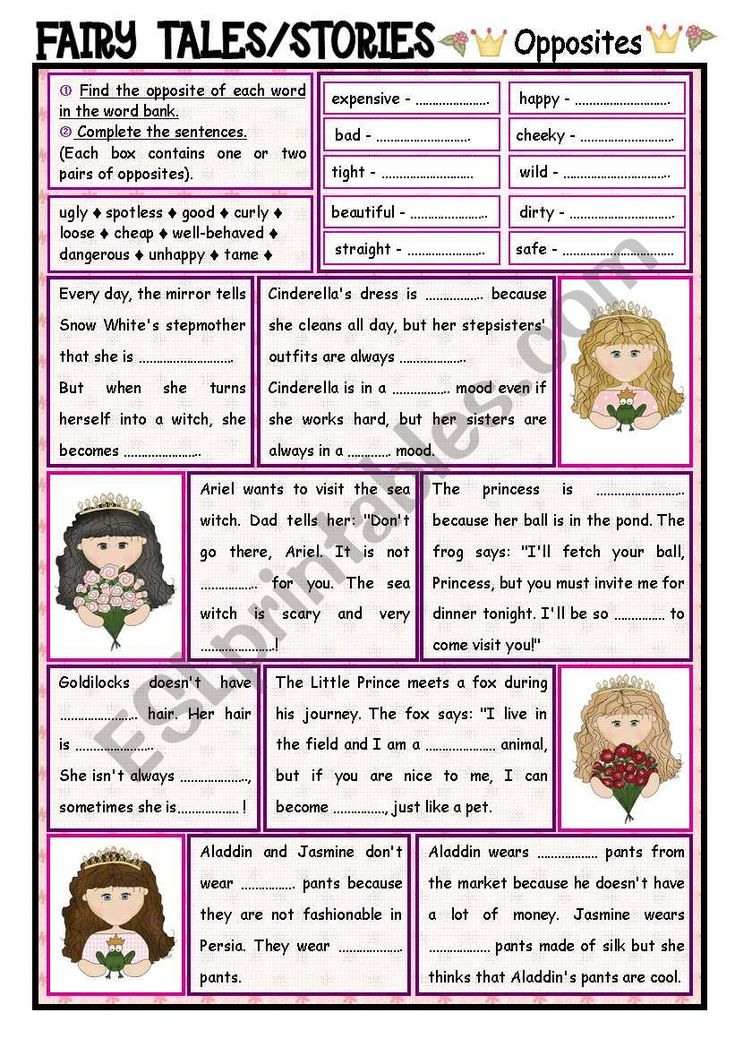
- O 2 SˉFˉMˉ — (AT 665).
- O 1 SˉFˉM - heroic tales, serpentine type (AT 300-301).
Using the above classification of types of fairy tales, we must keep in mind that many fairy tales have so-called. the second moves (ups and downs), which is expressed in the fact that the main character of the tale briefly loses the object of his desire. nine0003
Meletinsky, singling out five groups of fairy tales, tries to solve the problem of the historical development of the genre in general, and plots in particular. The built-up scheme O - Oˉ, M - Mˉ, F - Fˉ, S - Sˉ, in many respects corresponds to the general line of development from myth to fairy tale: demythologization of the main collision and highlighting the family principle, narrowing of collectivism, development of interest in personal destiny and compensation socially disadvantaged. All stages of this development are present in a fairy tale. The tale contains some motifs characteristic of totemic myths. The mythological origin of the universally widespread fairy tale about marriage with a wonderful “totem” creature, who temporarily cast off an animal shell and assumed a human form, is quite obvious (“Husband is looking for a disappeared or kidnapped wife (wife is looking for a husband)” SUS 400, “The Frog Princess” 402, “ Scarlet Flower” 425 °C, etc.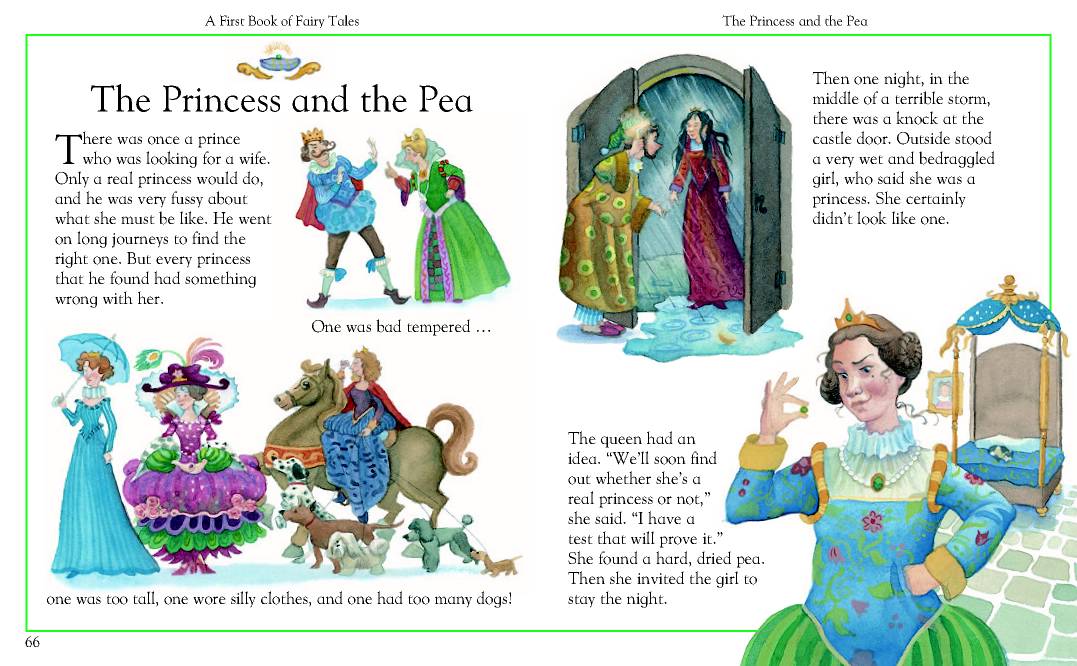 ). A fairy tale about visiting other worlds to free the captives who are there (“Three Underground Kingdoms” SUS 301 A, B, etc.). Popular tales about a group of children who fall into the power of an evil spirit, a monster, a cannibal and are saved thanks to the resourcefulness of one of them ("The Witch's Thumb Boy" SUS 327 B, etc.), or about the murder of a mighty serpent - a chthonic demon (" Snake Winner SUS 300 1 etc.). In a fairy tale, a family theme is actively developed (Cinderella SUS 510 A, etc.). For a fairy tale, a wedding becomes a symbol of compensation for the socially disadvantaged ("Sivka-Burka" SUS 530). The socially disadvantaged hero (younger brother, stepdaughter, fool) at the beginning of the tale, endowed with all the negative characteristics from his environment, is endowed with beauty and intelligence at the end (“Humpbacked Horse” SUS 531). The distinguished group of fairy tales about wedding trials draws attention to the story of personal destinies.
). A fairy tale about visiting other worlds to free the captives who are there (“Three Underground Kingdoms” SUS 301 A, B, etc.). Popular tales about a group of children who fall into the power of an evil spirit, a monster, a cannibal and are saved thanks to the resourcefulness of one of them ("The Witch's Thumb Boy" SUS 327 B, etc.), or about the murder of a mighty serpent - a chthonic demon (" Snake Winner SUS 300 1 etc.). In a fairy tale, a family theme is actively developed (Cinderella SUS 510 A, etc.). For a fairy tale, a wedding becomes a symbol of compensation for the socially disadvantaged ("Sivka-Burka" SUS 530). The socially disadvantaged hero (younger brother, stepdaughter, fool) at the beginning of the tale, endowed with all the negative characteristics from his environment, is endowed with beauty and intelligence at the end (“Humpbacked Horse” SUS 531). The distinguished group of fairy tales about wedding trials draws attention to the story of personal destinies.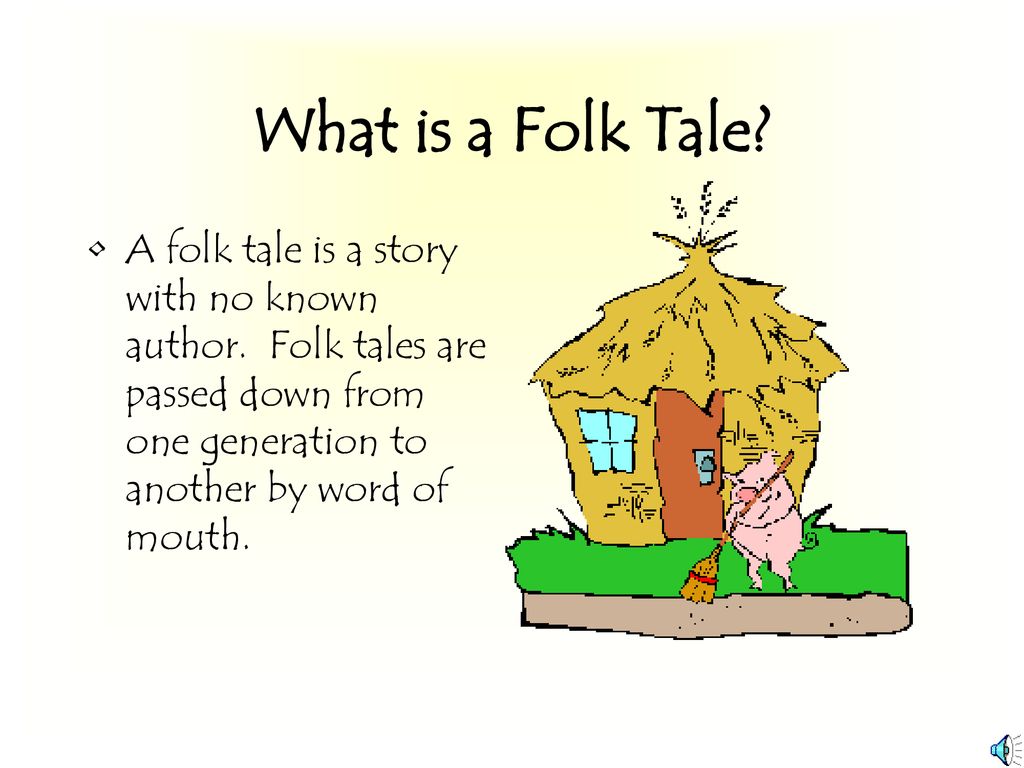 The novelistic theme in a fairy tale is no less interesting than the heroic one. Propp classifies the genre of fairy tale by the presence in the main test of "Battle - Victory" or by the presence of "Hard problem - Solving a difficult problem". The household fairy tale became a logical development of a fairy tale. nine0003
The novelistic theme in a fairy tale is no less interesting than the heroic one. Propp classifies the genre of fairy tale by the presence in the main test of "Battle - Victory" or by the presence of "Hard problem - Solving a difficult problem". The household fairy tale became a logical development of a fairy tale. nine0003
Novelistic fairy tale
Novelistic fairy tale (or, social and household ) has the same composition as a fairy tale, but qualitatively differs from it. The fairy tale of this genre is firmly connected with reality, there is only one earthly world, and the features of everyday life are realistically conveyed, and the main character is trickster , an ordinary person from the people's environment, fighting for justice with those in power and achieving his own with the help of ingenuity, dexterity and tricks. nine0003
Anecdotal tale
Anecdotal tale distinguished by A.N.
Fiction
Fiction are fairy tales built on nonsense.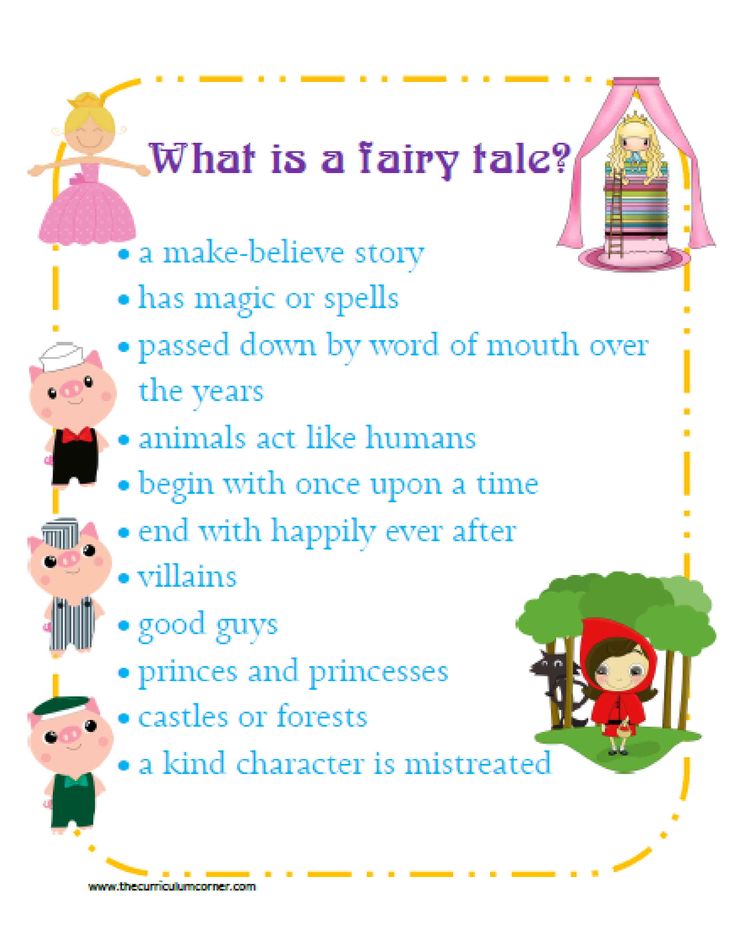 They are small in volume and often have the form of rhythmic prose. Fables are a special genre of folklore, which is found among all peoples as an independent work or as part of a fairy tale, buffoon, bylichka, bylina. nine0003
They are small in volume and often have the form of rhythmic prose. Fables are a special genre of folklore, which is found among all peoples as an independent work or as part of a fairy tale, buffoon, bylichka, bylina. nine0003
Collecting fairy tales
In Europe, the first collector of fairy-tale folklore was the French poet and literary critic Charles Perrault (1628-1703), who in 1697 published the collection Tales of Mother Goose. In 1704-1717, an abridged edition of the Arabian tales of the Thousand and One Nights, prepared by Antoine Galland for King Louis XIV, was published in Paris. However, the beginning of the systematic collection of fairy-tale folklore was laid by representatives of the German mythological school in folklore, primarily members of the circle of Heidelberg romantics, the Brothers Grimm. It was after they published the collection “Home and Family German Tales” in 1812-1814, which was sold in large circulation, that writers and scientists from other European countries showed interest in their native folklore.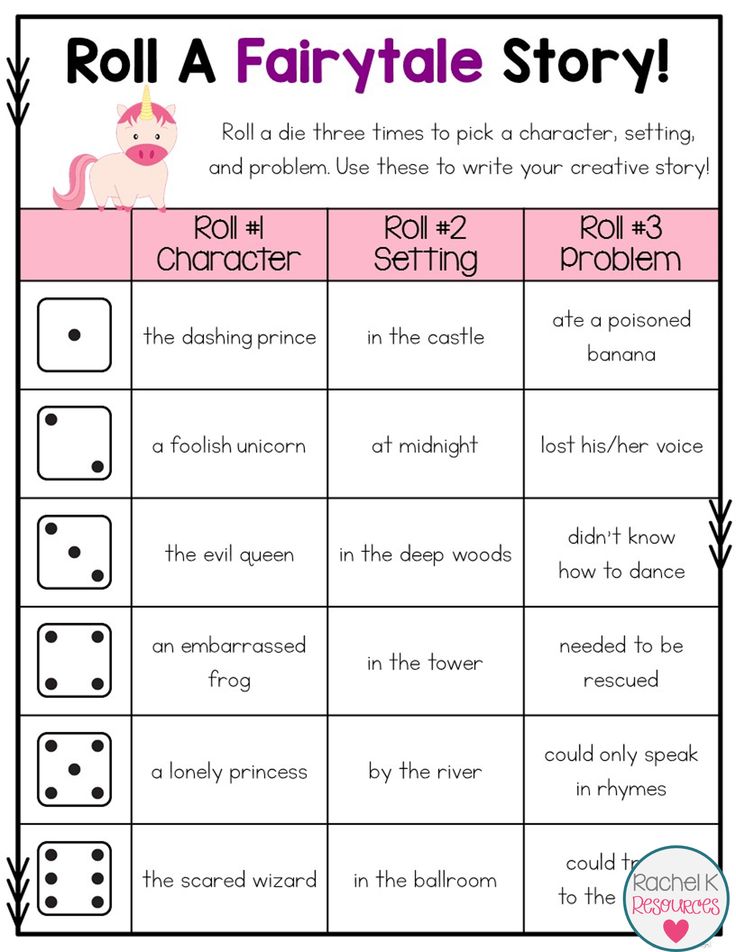 However, the Brothers Grimm had predecessors in Germany itself. For example, back in 1782-1786, the German writer Johann Karl August Museus (died in 1787) compiled a five-volume collection "Folk Tales of the Germans", but it was published only in 1811 by his friend the poet Wieland. In Russia, the Russian ethnographer Alexander Nikolaevich Afanasiev was the pioneer in collecting Russian folk tales. The collection "Russian Children's Tales" prepared by him was published in Moscow in 1870. A great contribution to the collection and organization of children's folklore was made by such personalities as Avdeeva, Dal. In the history of collecting children's folklore, the ethnographer-collector Shane also left a noticeable mark. He singled out children's folklore as a special field of science. The contribution to the popularization and collection of fairy tales was also made by the Ukrainian poet Malkovich. nine0044 [4]
However, the Brothers Grimm had predecessors in Germany itself. For example, back in 1782-1786, the German writer Johann Karl August Museus (died in 1787) compiled a five-volume collection "Folk Tales of the Germans", but it was published only in 1811 by his friend the poet Wieland. In Russia, the Russian ethnographer Alexander Nikolaevich Afanasiev was the pioneer in collecting Russian folk tales. The collection "Russian Children's Tales" prepared by him was published in Moscow in 1870. A great contribution to the collection and organization of children's folklore was made by such personalities as Avdeeva, Dal. In the history of collecting children's folklore, the ethnographer-collector Shane also left a noticeable mark. He singled out children's folklore as a special field of science. The contribution to the popularization and collection of fairy tales was also made by the Ukrainian poet Malkovich. nine0044 [4]
Origin (genesis) and development of fairy tales
Mythological fairy tale
Folklore fairy tales come from the totemic myths of the primitive communal society (primitive peoples of North Asia, America, Africa, Australia and Oceania).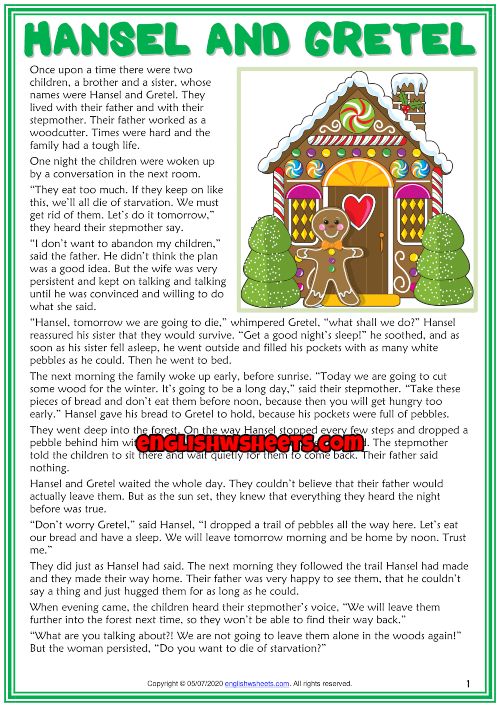 Primary, archaic tales are called archaic or mythological. The carriers of archaic folklore themselves distinguish them from the mythological narrative. Usually, two forms are distinguished: pynyl and lymnyl - among the Chukchi, hwenoho and heho - at fon (Benin), liliu and kukvanebu - at kirivna in Melanesia, etc. These two main forms correspond approximately to myth and fairy tale. The difference between them expresses the opposition of the sacred and the profane , the profane being often the result of deritualization and the loss of the esoteric character. A structural difference was not necessarily between the two forms, it might not have existed at all. Very often, one and the same or similar text could be interpreted by one tribe as a real myth, and by another as a fairy tale narration excluded from the ritual-sacred system. One can define archaic tales as non-strict myths, given that they include mythological representations.
Primary, archaic tales are called archaic or mythological. The carriers of archaic folklore themselves distinguish them from the mythological narrative. Usually, two forms are distinguished: pynyl and lymnyl - among the Chukchi, hwenoho and heho - at fon (Benin), liliu and kukvanebu - at kirivna in Melanesia, etc. These two main forms correspond approximately to myth and fairy tale. The difference between them expresses the opposition of the sacred and the profane , the profane being often the result of deritualization and the loss of the esoteric character. A structural difference was not necessarily between the two forms, it might not have existed at all. Very often, one and the same or similar text could be interpreted by one tribe as a real myth, and by another as a fairy tale narration excluded from the ritual-sacred system. One can define archaic tales as non-strict myths, given that they include mythological representations.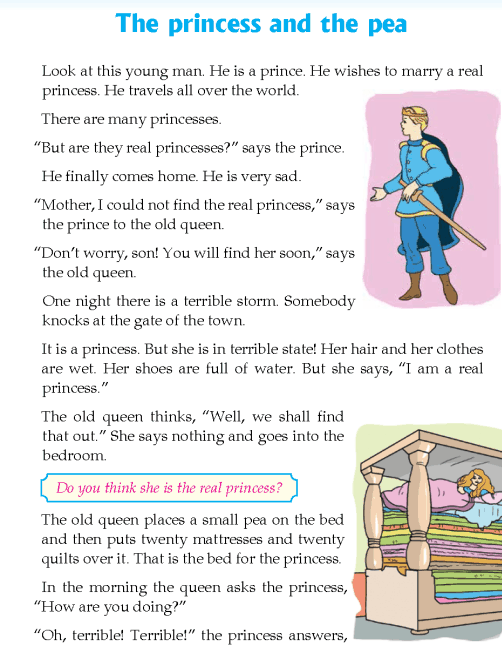 F. Boas notes that the only difference between the archaic tale and the myth of the Indians of North America is that cultural hero obtains benefits for himself, and not for the team. The non-strict authenticity of the archaic tale entails the predominance of the aesthetic function over the informative (the purpose of the archaic tale is entertainment). So the exoteric myth , told to the uninitiated for the purpose of general entertainment, is on the way of turning a myth into a fairy tale.
F. Boas notes that the only difference between the archaic tale and the myth of the Indians of North America is that cultural hero obtains benefits for himself, and not for the team. The non-strict authenticity of the archaic tale entails the predominance of the aesthetic function over the informative (the purpose of the archaic tale is entertainment). So the exoteric myth , told to the uninitiated for the purpose of general entertainment, is on the way of turning a myth into a fairy tale.
heroes who arose after the destruction of matriarchy, that is, after the collapse of former beliefs.
Notes
- ↑ Dictionary of literary terms under. ed. S. P. Belokurova. M., 2005.
- ↑ Dictionary of literary terms under. ed. S. P. Belokurova. M., 2005.
- ↑ Fairy tale // Fasmer M. Etymological dictionary of the Russian language. T. 1-4. M., 1964-1973.
- ↑ Book Review
Literature
Tale of animals
- Kostyukhin E.
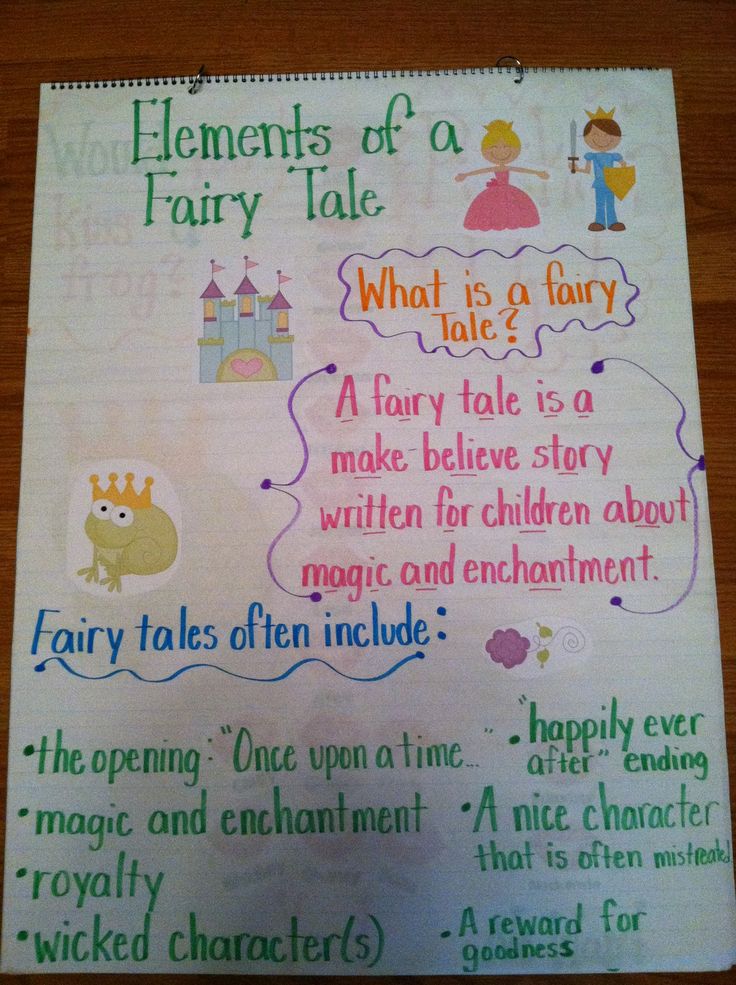 A. Types and forms of the animal epic. Moscow, 1987
A. Types and forms of the animal epic. Moscow, 1987
Cumulative fairy tale
Fairy tale
- E. M. Meletinsky. Myth and fairy tale.
- The structure of a fairy tale (collection of articles) / Ed. Y. S. Neklyudova. Moscow, 2001 ISBN 5-7281-0373-1
- Vladimir Propp. Morphology of the "magic" fairy tale.
- Vladimir Propp. The historical roots of the Fairy Tale
- Encyclopedia Myths of the peoples of the world. Fairy tale and myth.
- S. Yu. Neklyudov. Avantetext in folklore. nine0081 A. V. Korotich. Modern Russian fairy tale for children.
- Project "Oriental audio tales" on Hindustan.ru
Everyday fairy tales
- Yudin Yu. I. Fool, jester, thief and devil (Historical roots of everyday fairy tales). - Moscow, 2006. ISBN 5-87604-148-3
Children's fairy tale
- Kapitsa F. S. Russian children's folklore: Textbook for university students / Kapitsa F.
